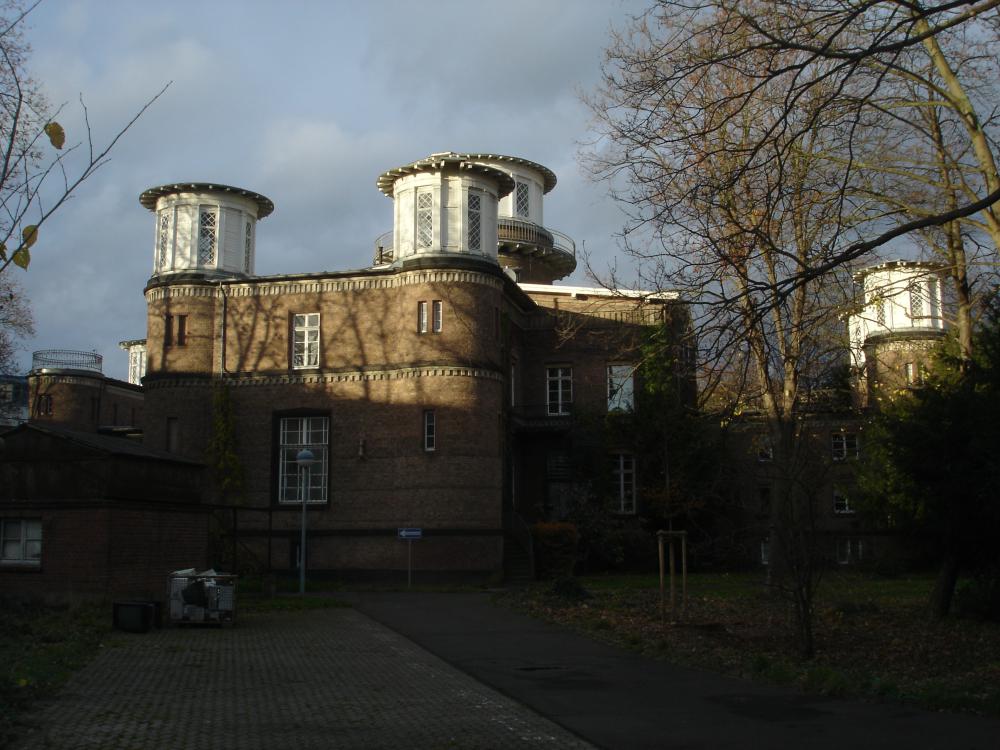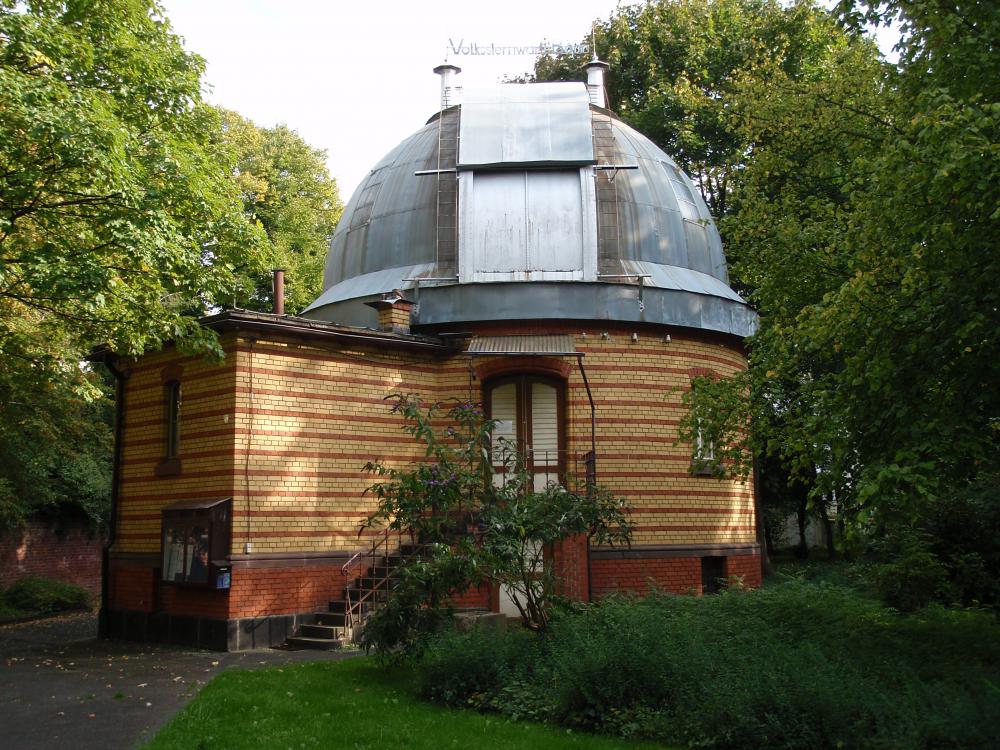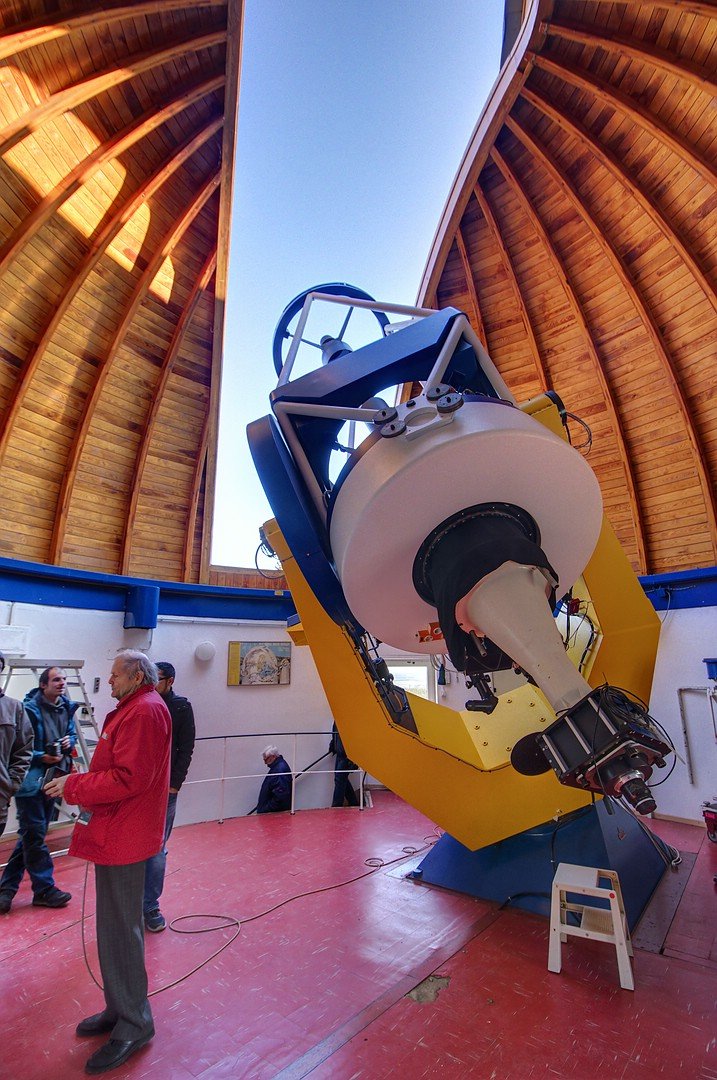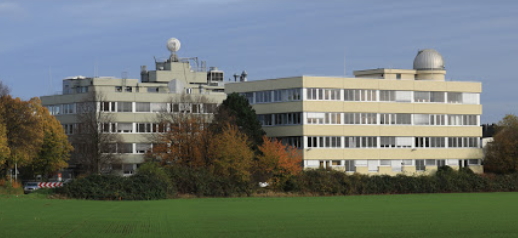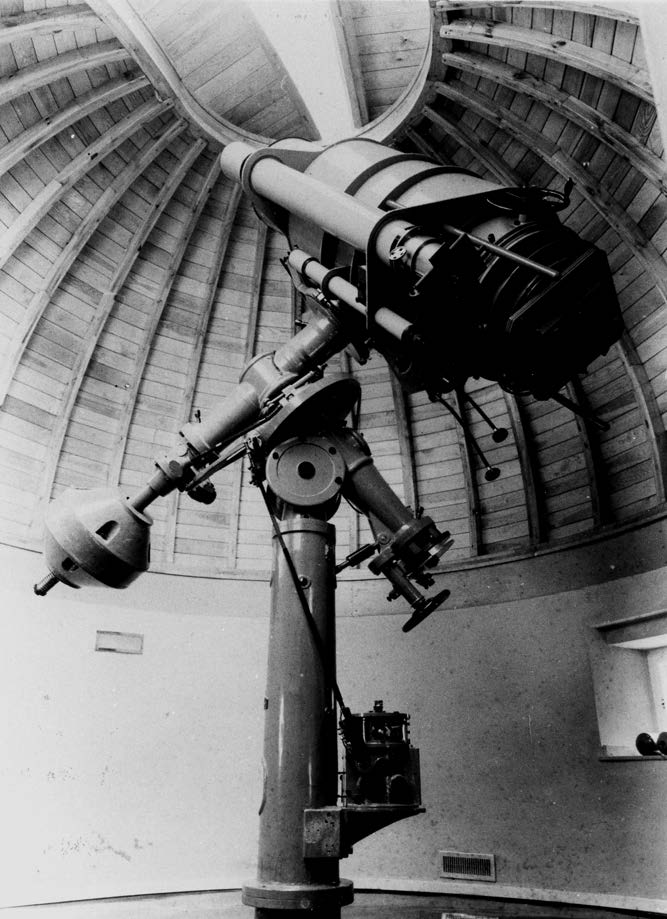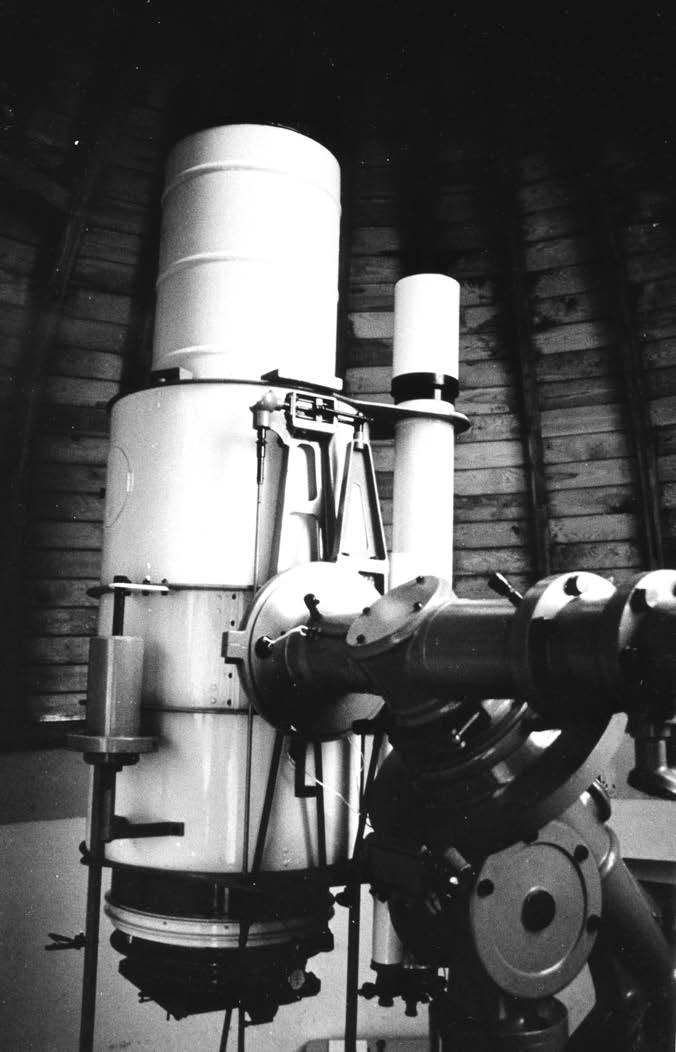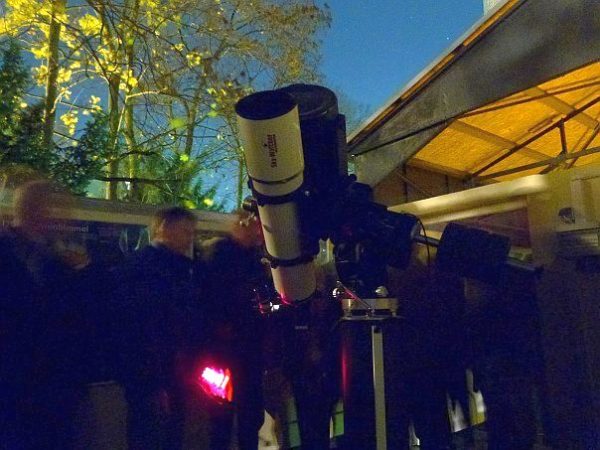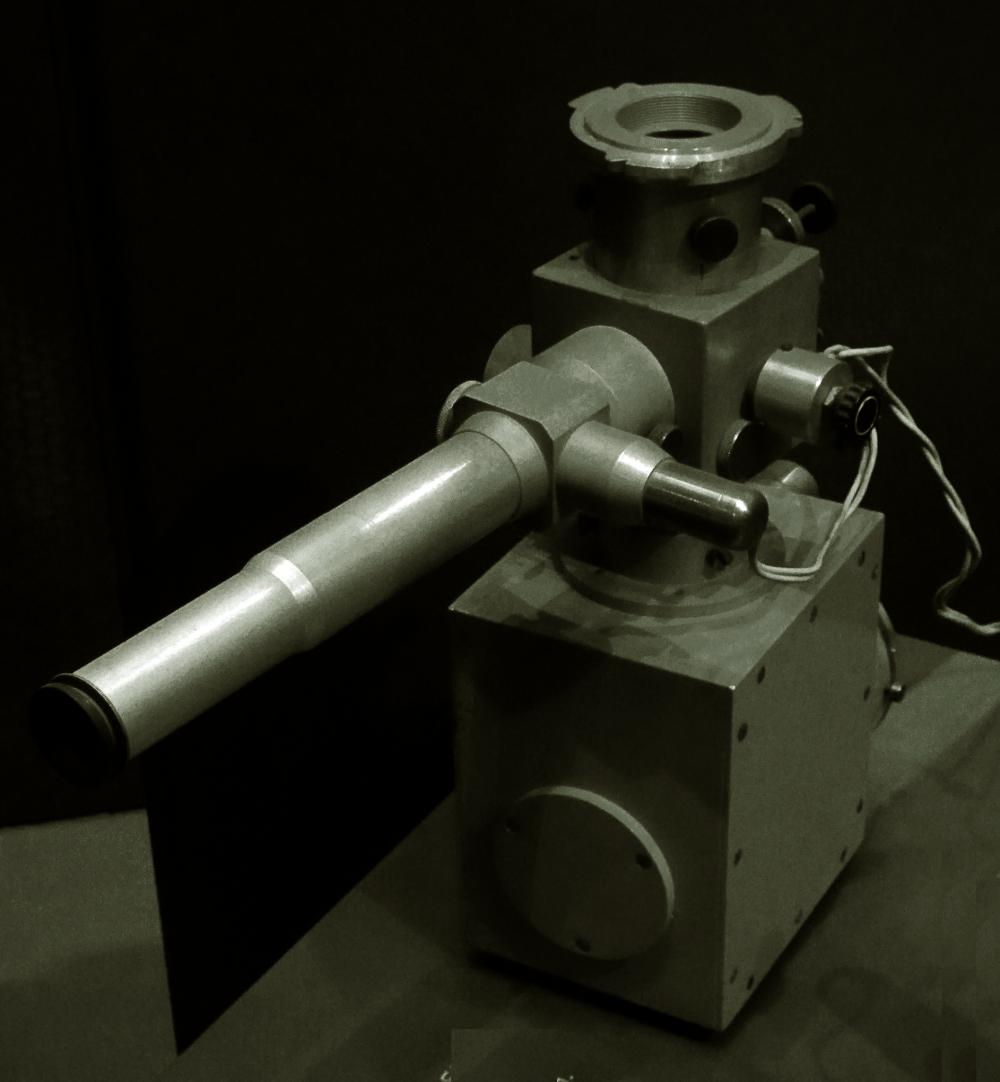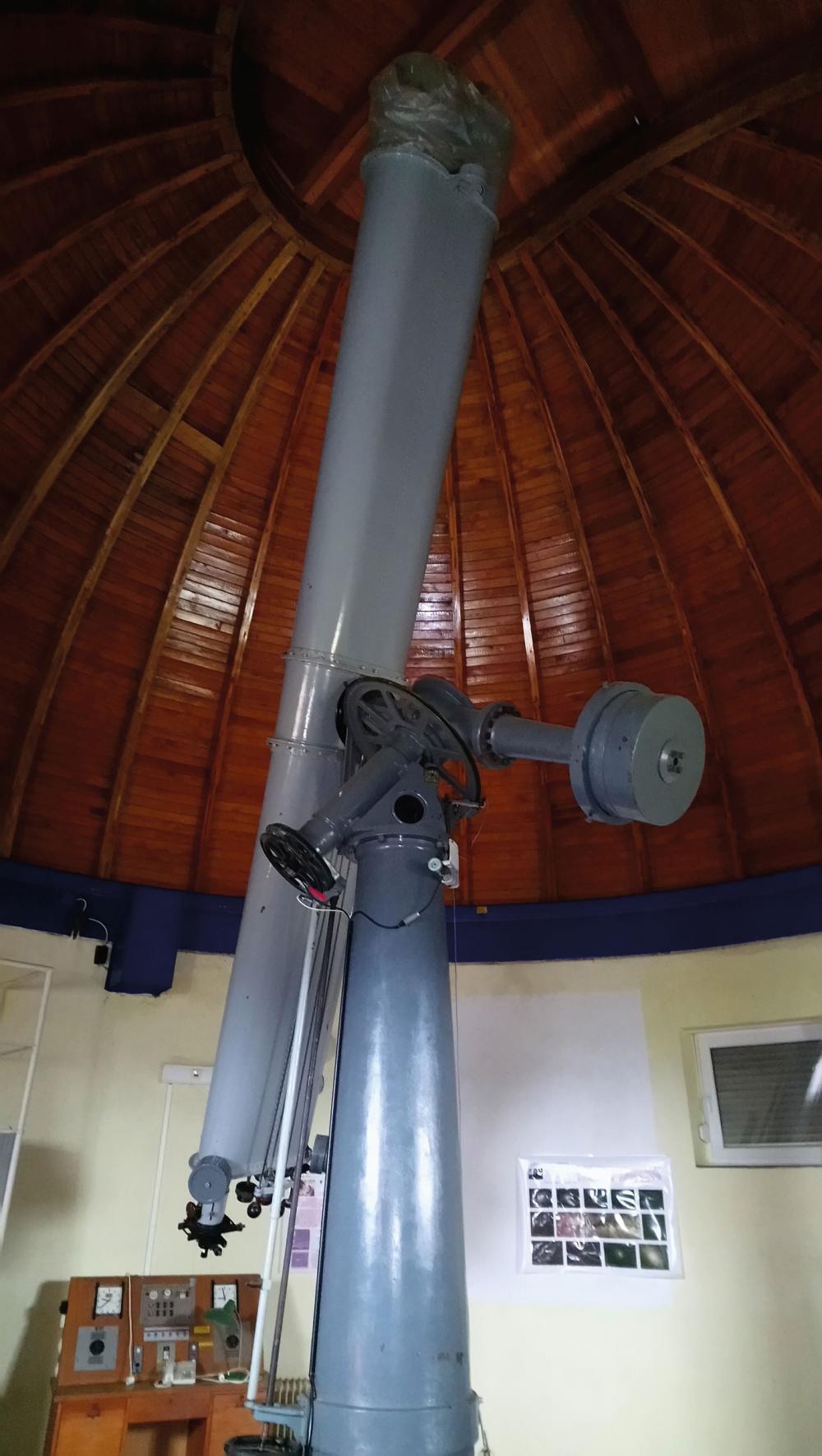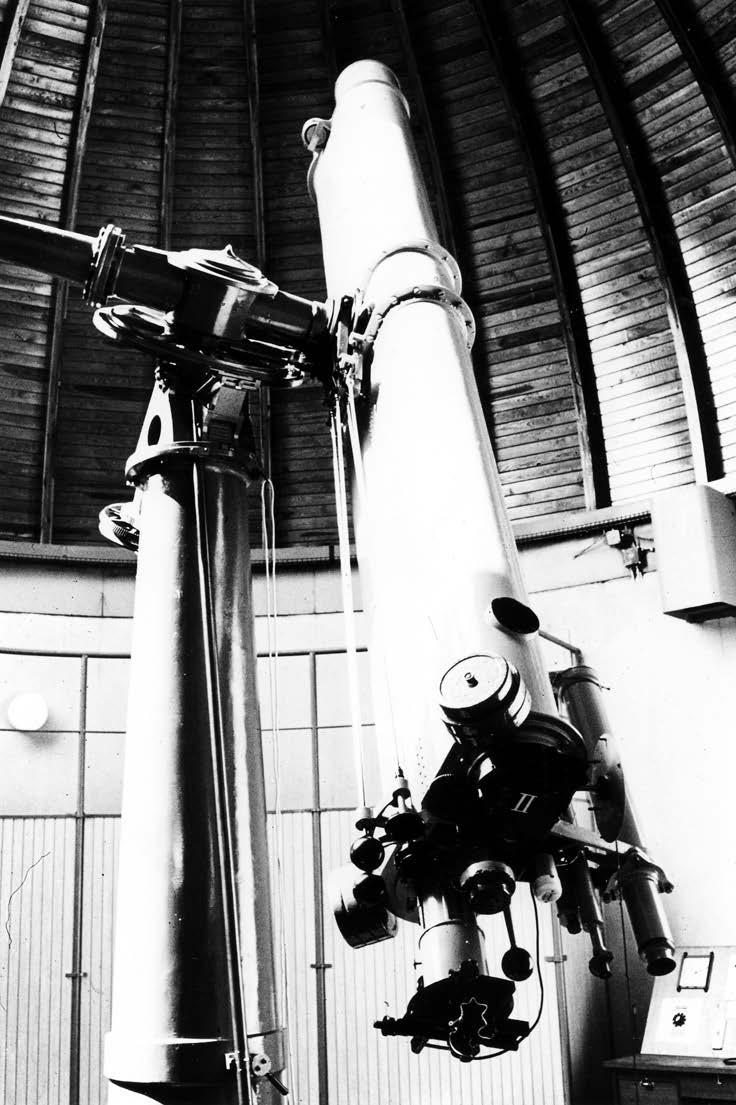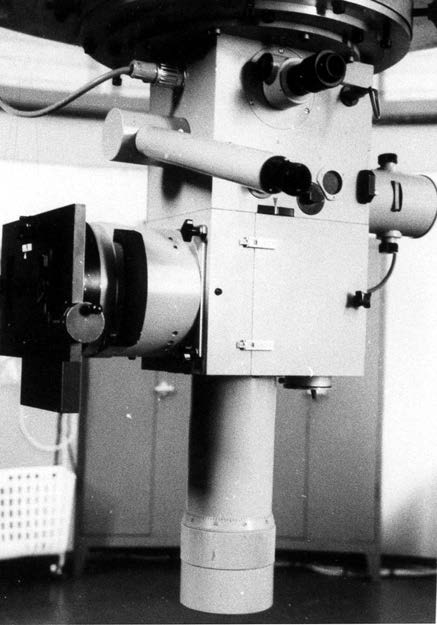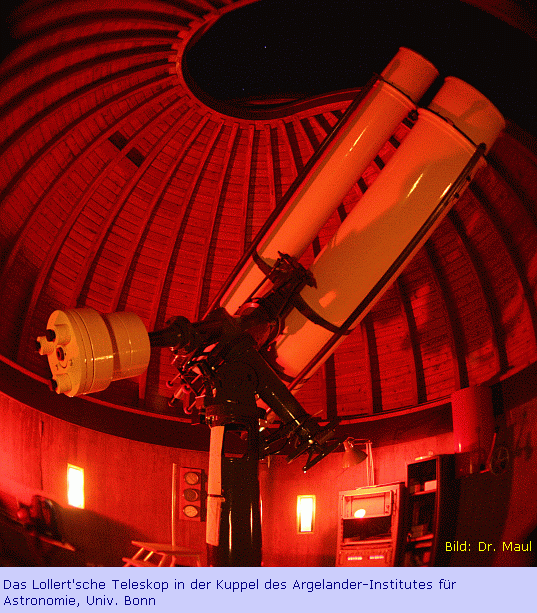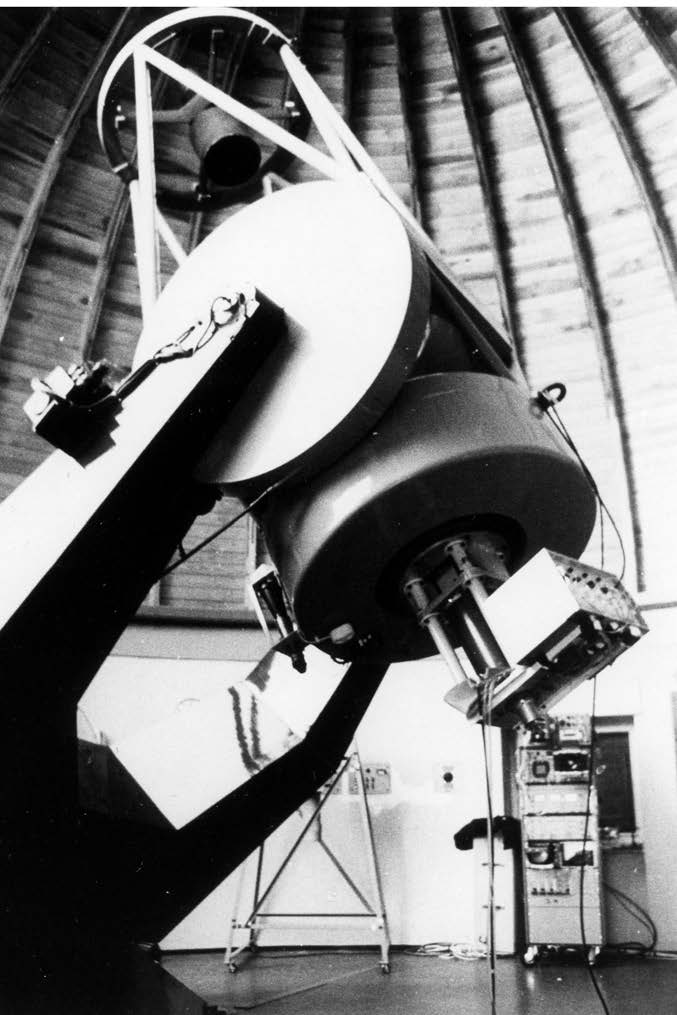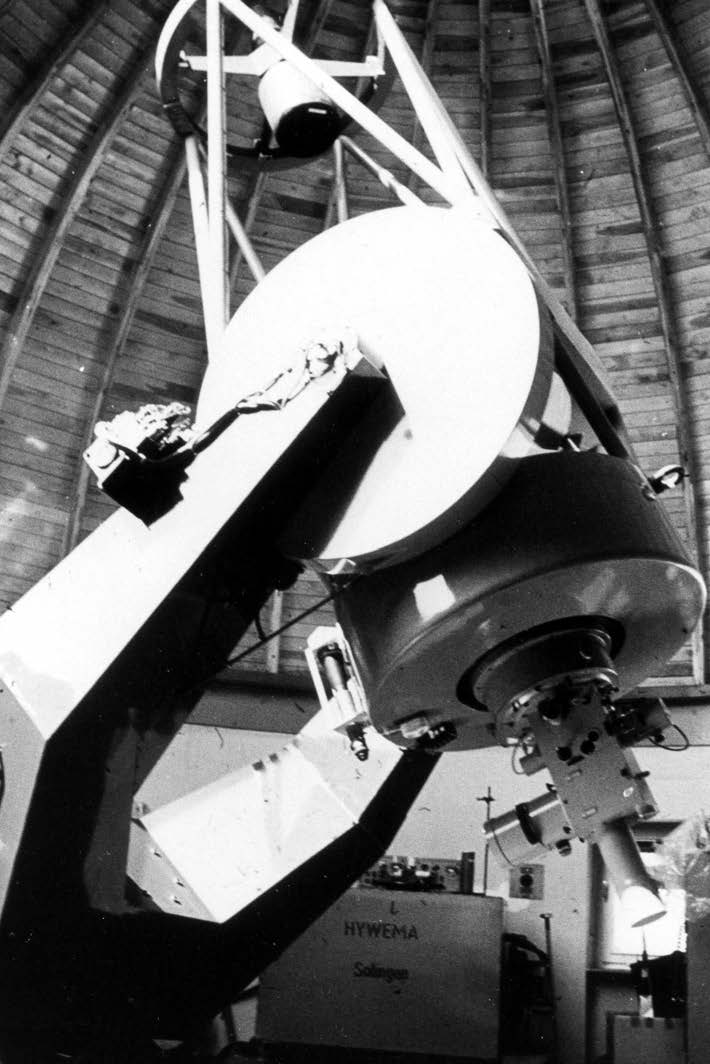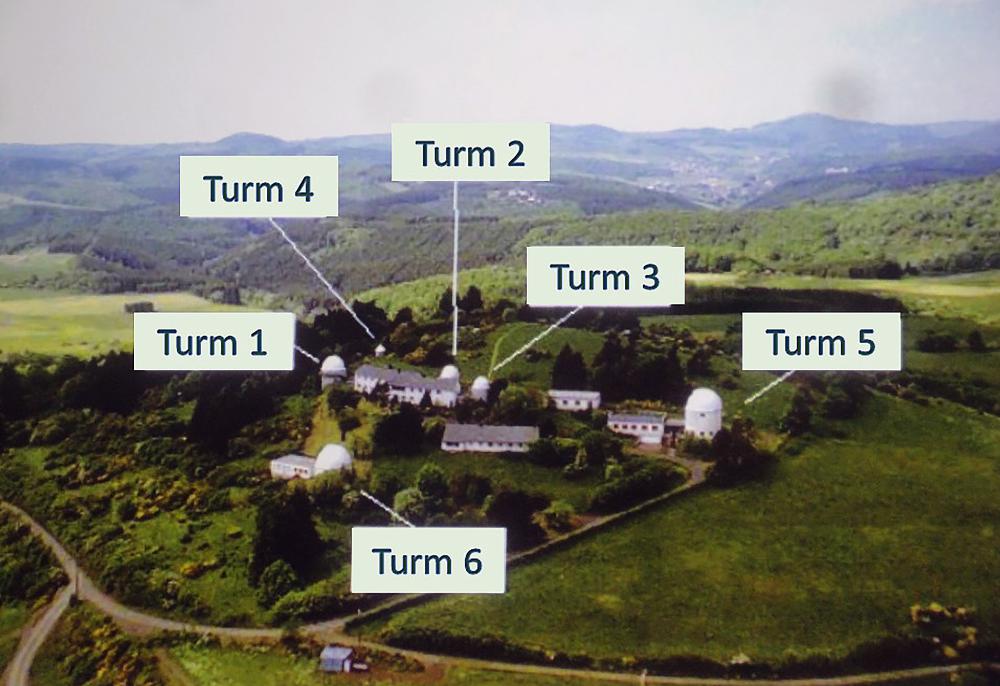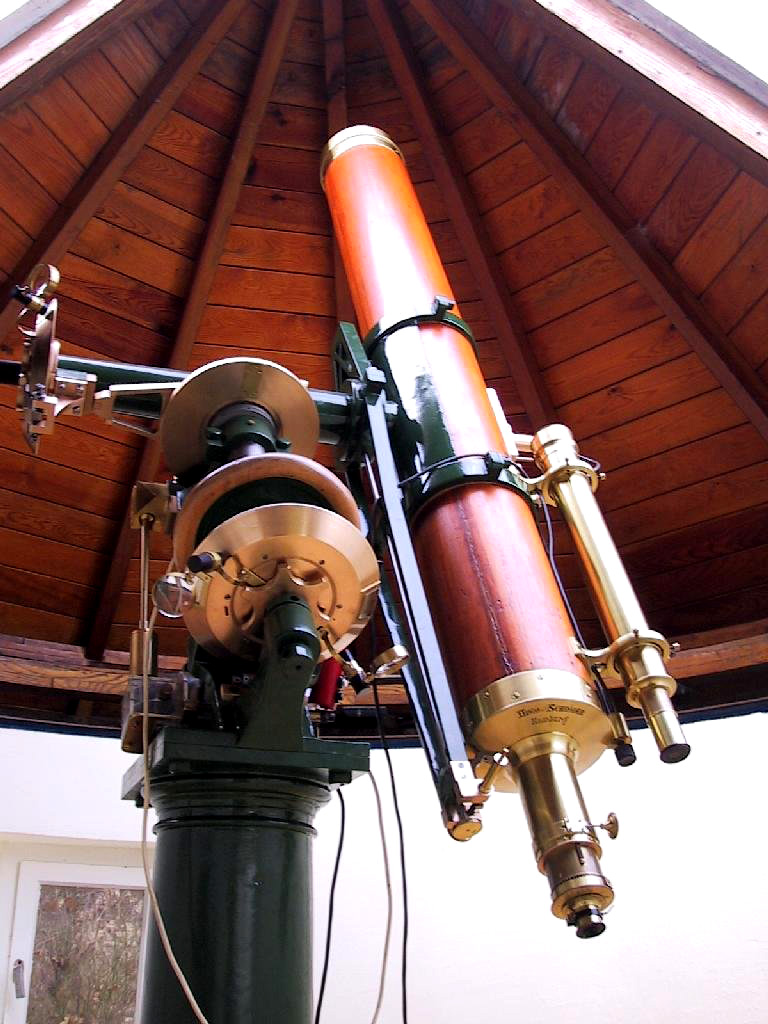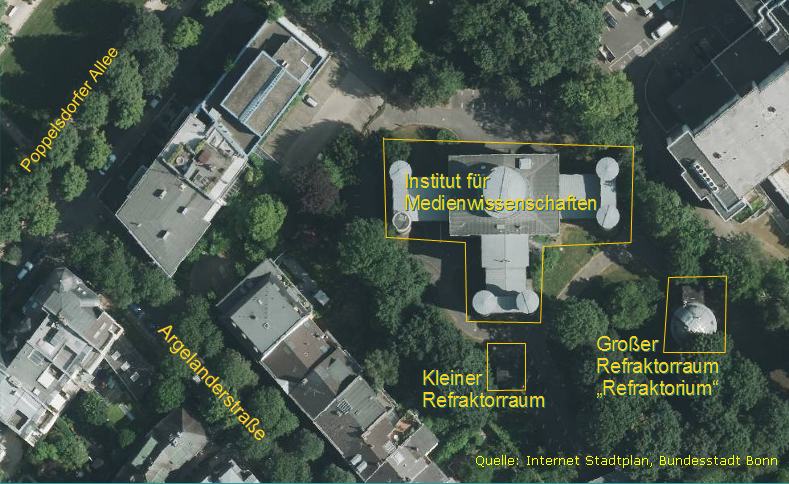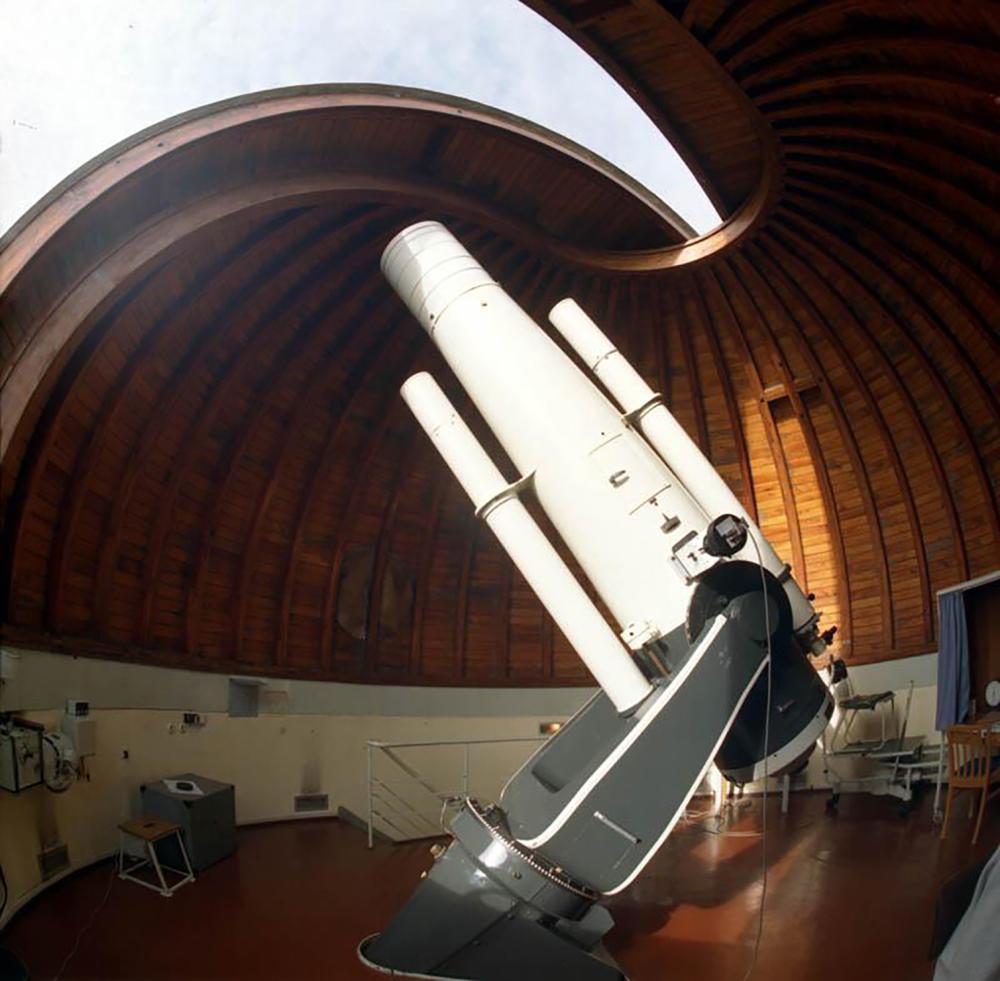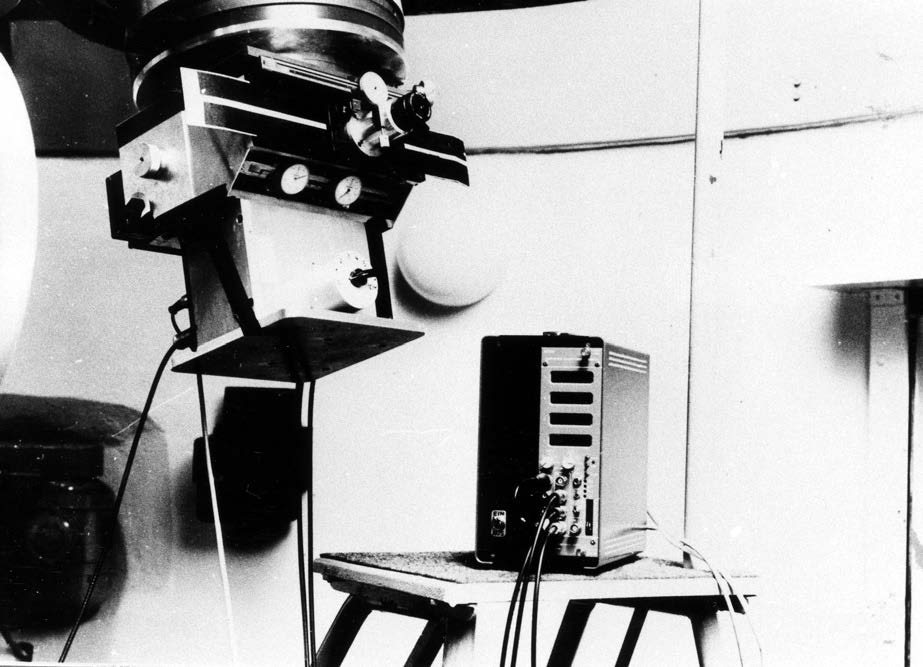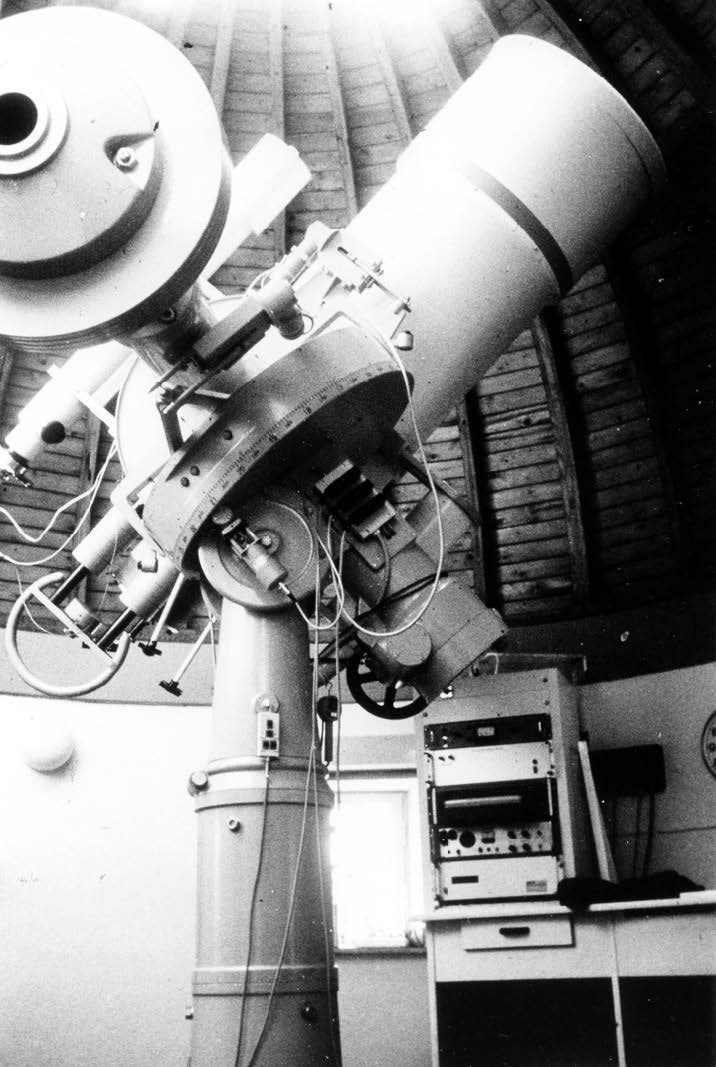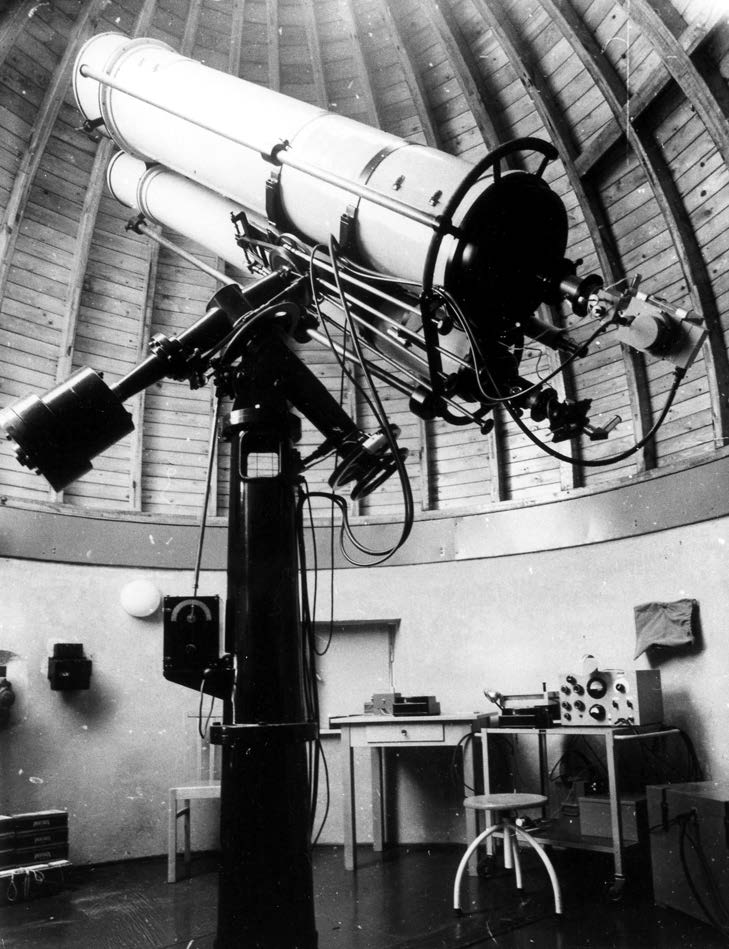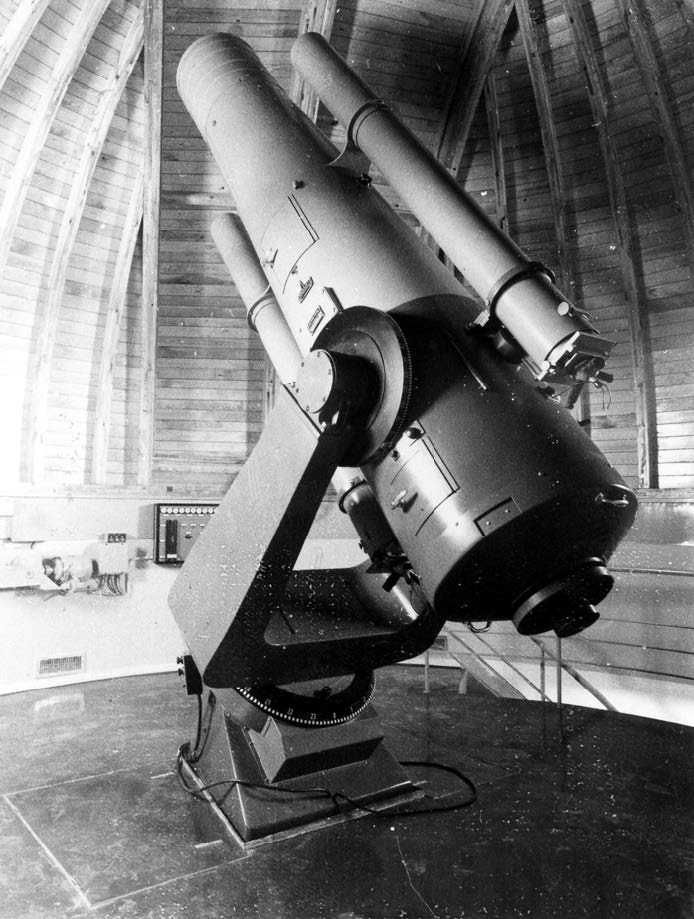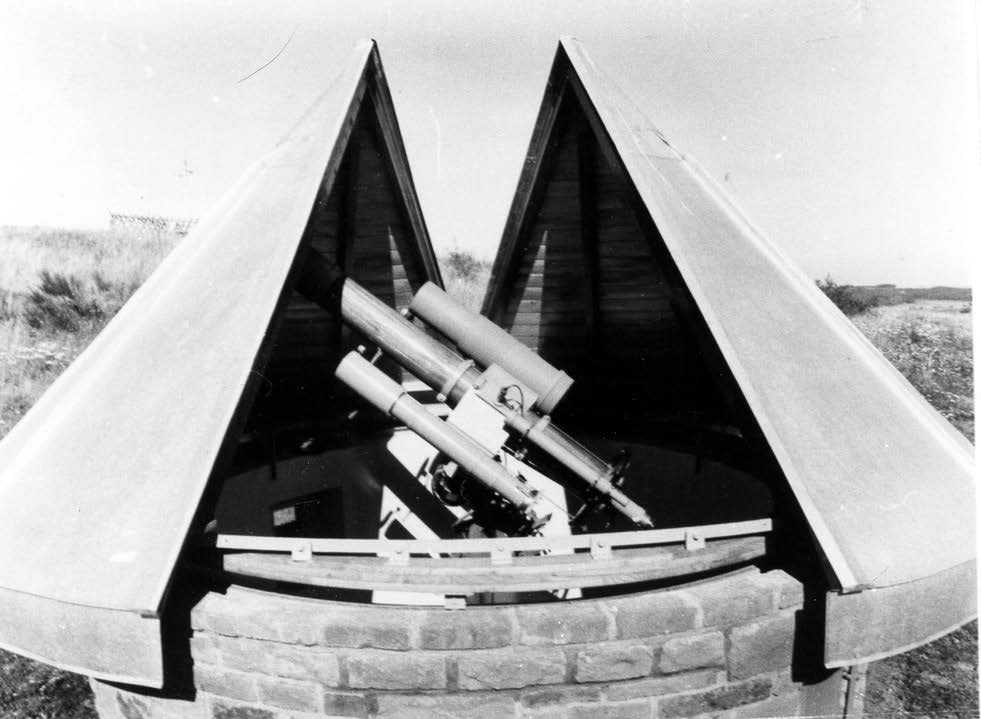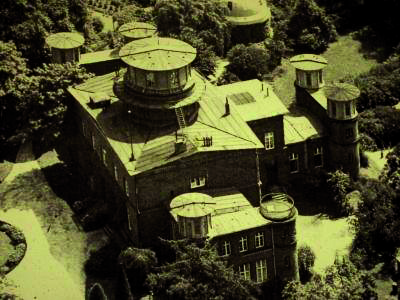
Category of Astronomical Heritage: tangible immovable
Bonn Observatory, Germany

Description
Geographical position
Old Bonn observatory
- Poppelsdorfer Allee 47, D-53115 Bonn.
Argelander-Institut für Astronomie (AIfA)
- Bonn University, Auf dem Hügel 71, 53121 Bonn.
Public observatory Bonn
- Poppelsdorfer Allee 47, D-53115 Bonn.
Hoher List (1954-2012)
- D-54552 Schalkenmehren, Eifel.
Location
Old Bonn observatory
- Lat. 50° 43′ 41″ N, long. 7° 05′ 51″ W, elevation 64m above mean sea level.
Argelander-Institut für Astronomie (AIfA)
- Lat. 50° 43′ 48″ N, long. 7° 04′ 09″ W, elevation 73m above mean sea level.
Public observatory Bonn
- Lat. 50° 43′ 40″ N, long. 7° 05′ 53″ W, elevation 63m above mean sea level.
Hoher List
- Lat. 50° 09′ 42″ N, long. 6° 50′ 55″ W, elevation 549m above mean sea level.
IAU observatory code
520; Hoher List 017
Description of (scientific/cultural/natural) heritage
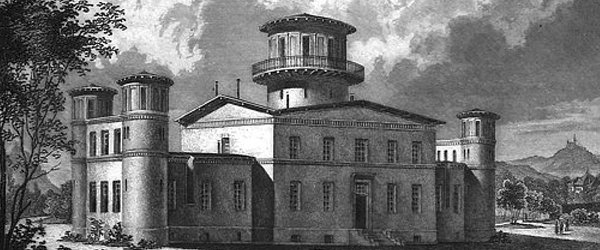
Fig. 1a. Bonn Observatory, building design by Karl Friedrich Schinkel (1838), steel engraving (1850)
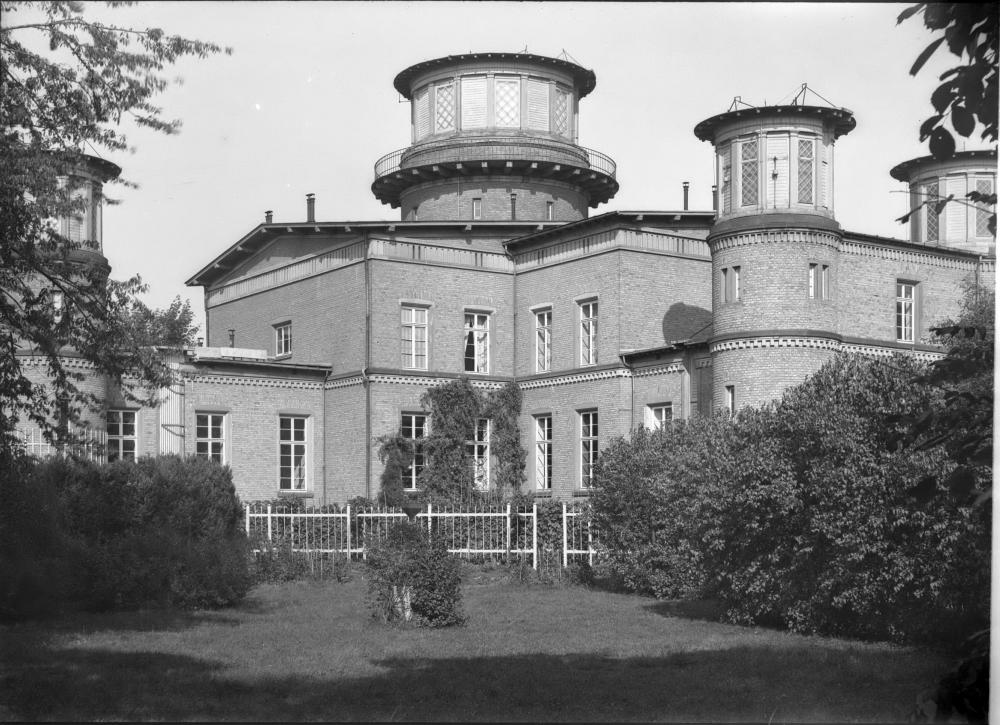
Fig. 1b. Bonn Observatory (Photo 1893), (Wikipedia)
Fig. 2. Bonn Observatory, built in 1844 (Photo: Gudrun Wolfschmidt)
Architecture
The architecture of observatories around 1800 is characterized by observatories in the shape of a greek cross with a central dome. Prominent examples of cross shaped observatories are the buildings in Berlin, New Observatory (1835) and in Bonn (1844), both designed by the famous architect Karl Friedrich Schinkel (1781--1841).
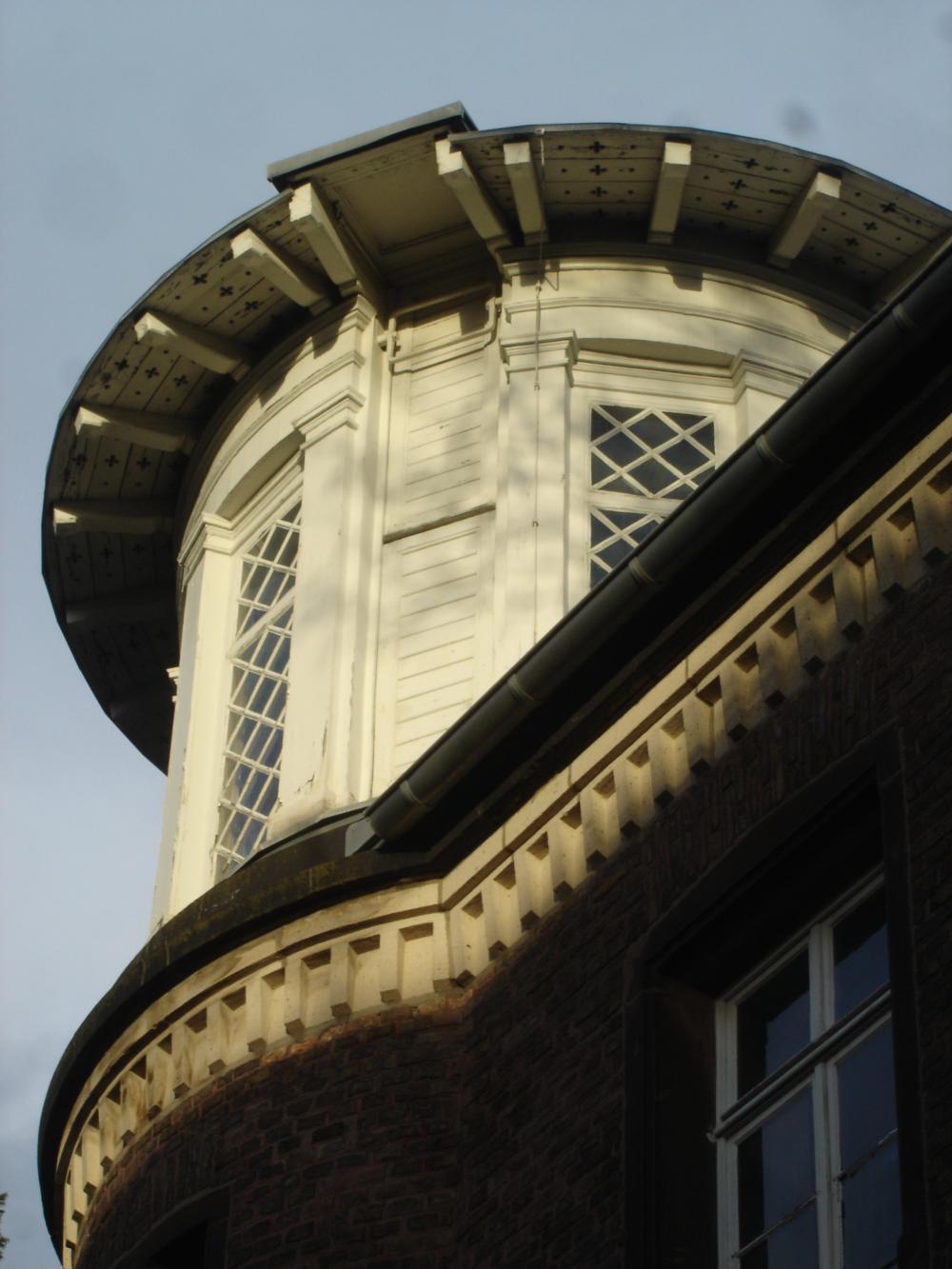
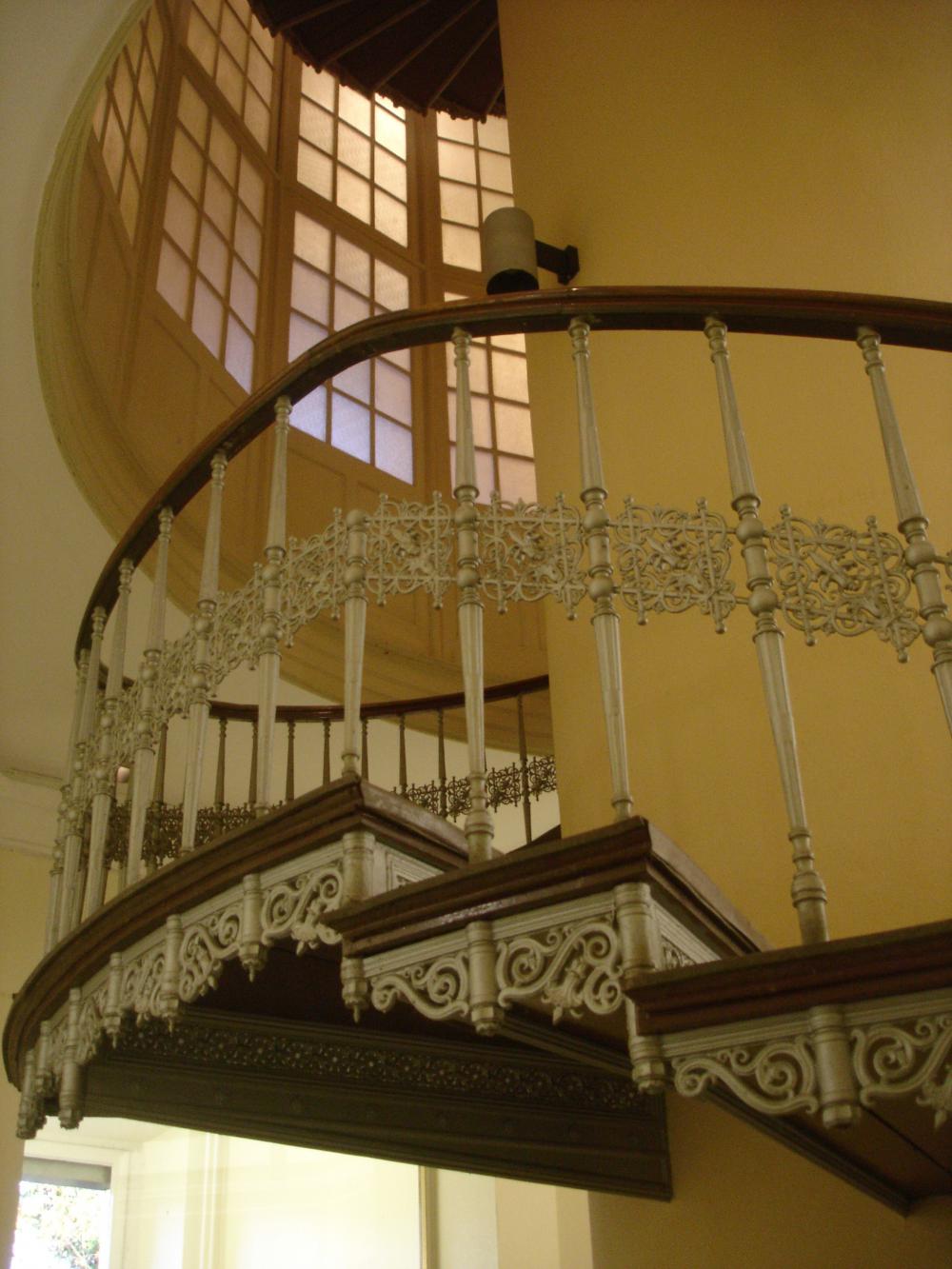
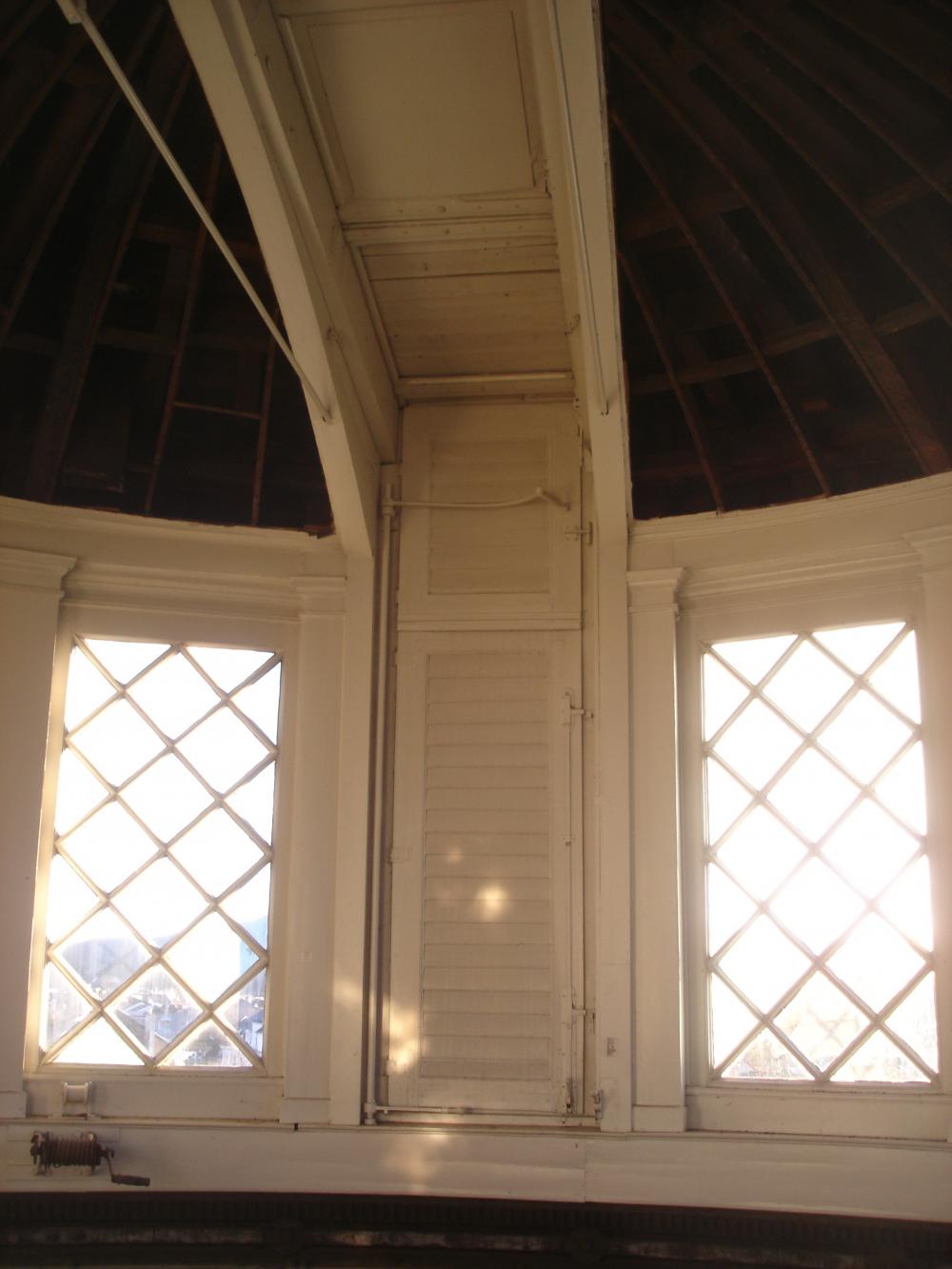
Fig. 3a, 3b and 3c. Tower of Bonn observatory (Photo: Gudrun Wolfschmidt)
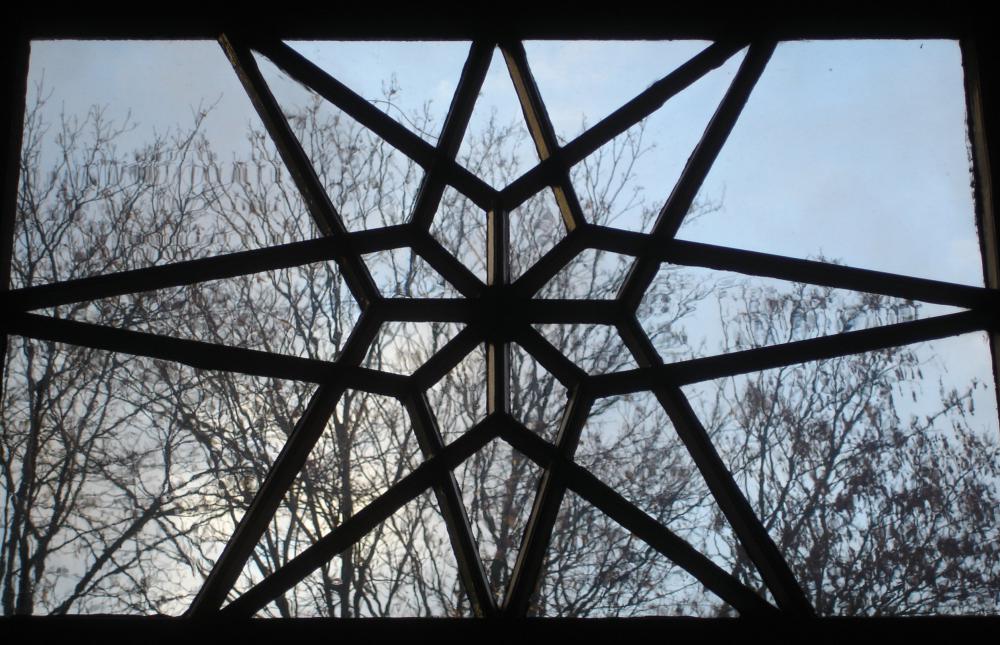
Fig. 4a. Bonn Observatory (Photo: Gudrun Wolfschmidt)
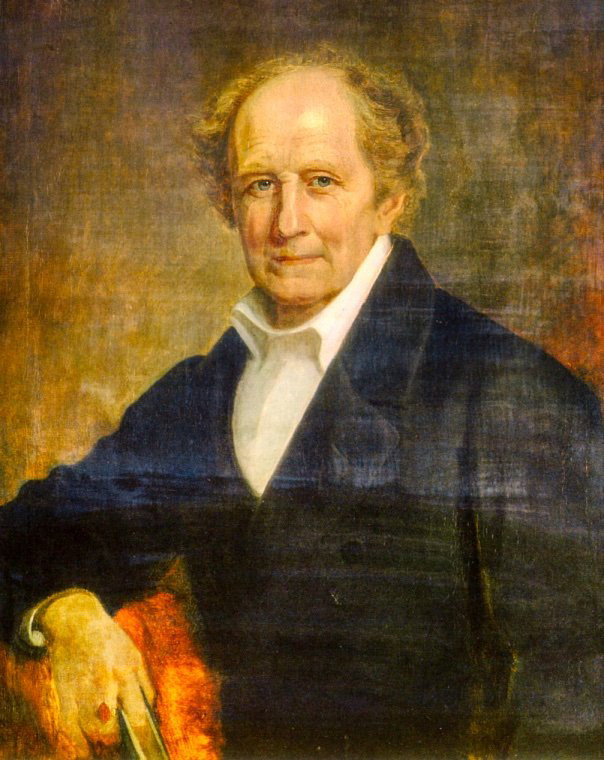
Fig. 4b. Friedrich Wilhelm August Argelander (1799--1875), painting by August Bausch (1869), (Wikipedia)
Friedrich Wilhelm August Argelander (1799--1875) could raise money for Bonn Observatory, because the Friedrich Wilhelm IV. (1795--1861), King of Prussia from 1840 to 1858, was his friend since his youth. Bonn Observatory of the Rheinische Friedrich-Wilhelms-Universität Bonn was built according to Schinkel’s design by the university architect Peter Josef Leydel (1798--1845), 1840 to 1844. It has an impressive architecture in classicistic style with a central dome and six smaller "domes" of cylindrical shape. The observations started in 1845.
Cutting edge research in the 19th century in Bonn
The main fields of research of Friedrich Wilhelm August Argelander (1799--1875), director since 1836, internationally recognized, were positional astronomy and visual photometry - cutting edge research fields of that time.
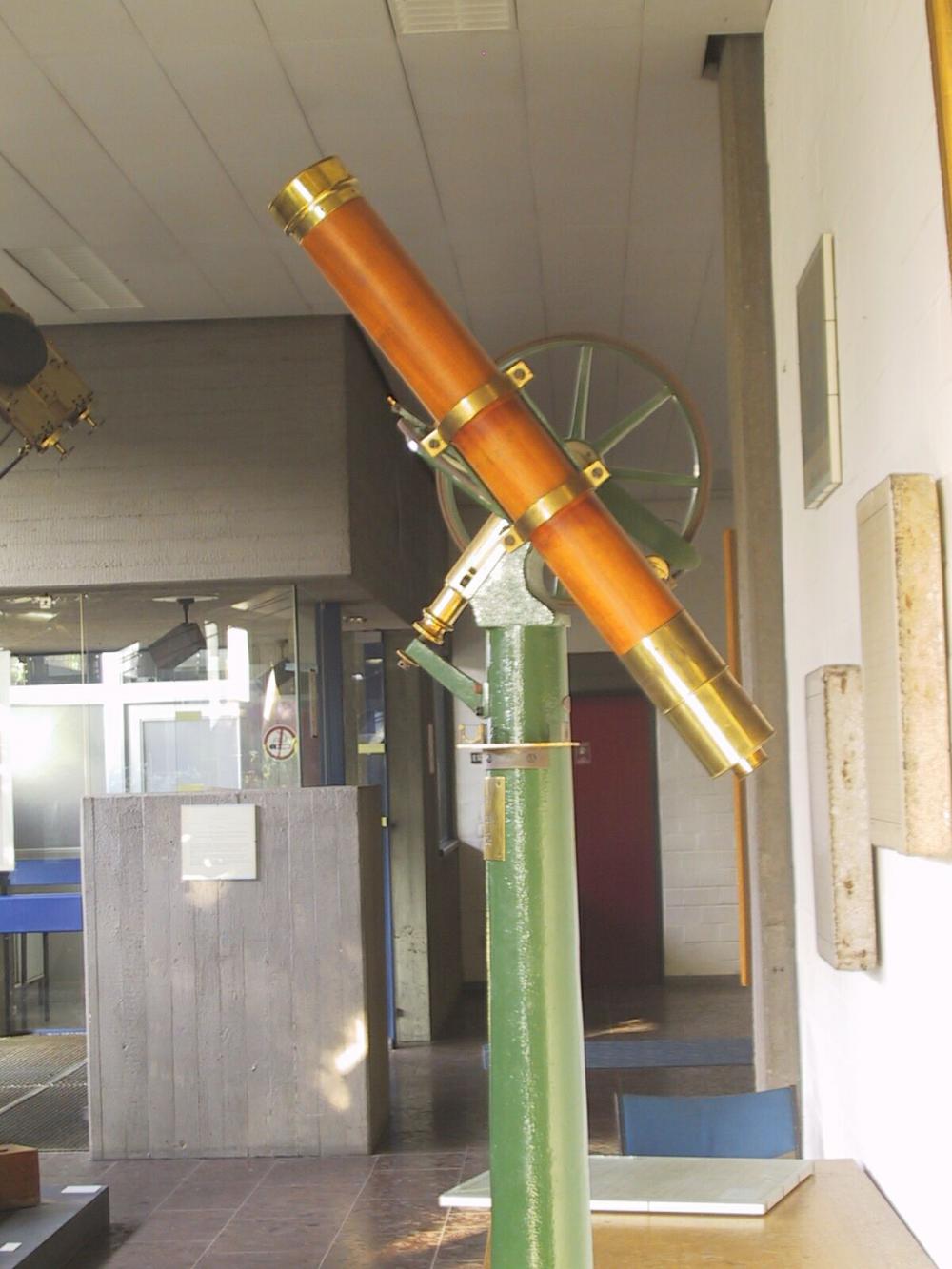
Fig. 5a. 7.7-cm-Comet seeker of Bonn Observatory, used for the Bonner Durchmusterung (1863)
In Bonn he compiled since 1852 with the 7.7cm comet seeker (focal length 65cm) his famous Bonner Durchmusterung (1863) (cf. Schmidt 1990). He created with the Bonn survey the first comprehensive star catalogue of modern times with 324,198 stars with positions and magnitudes; the cooperators were Johann Friedrich Julius Schmidt (1825--1884), Friedrich Thormann (1831--1882), Eduard Schönfeld (1828--1891) und Adalbert Krüger (1832--1896). This was very important in order to detect asteroids but also variable stars.
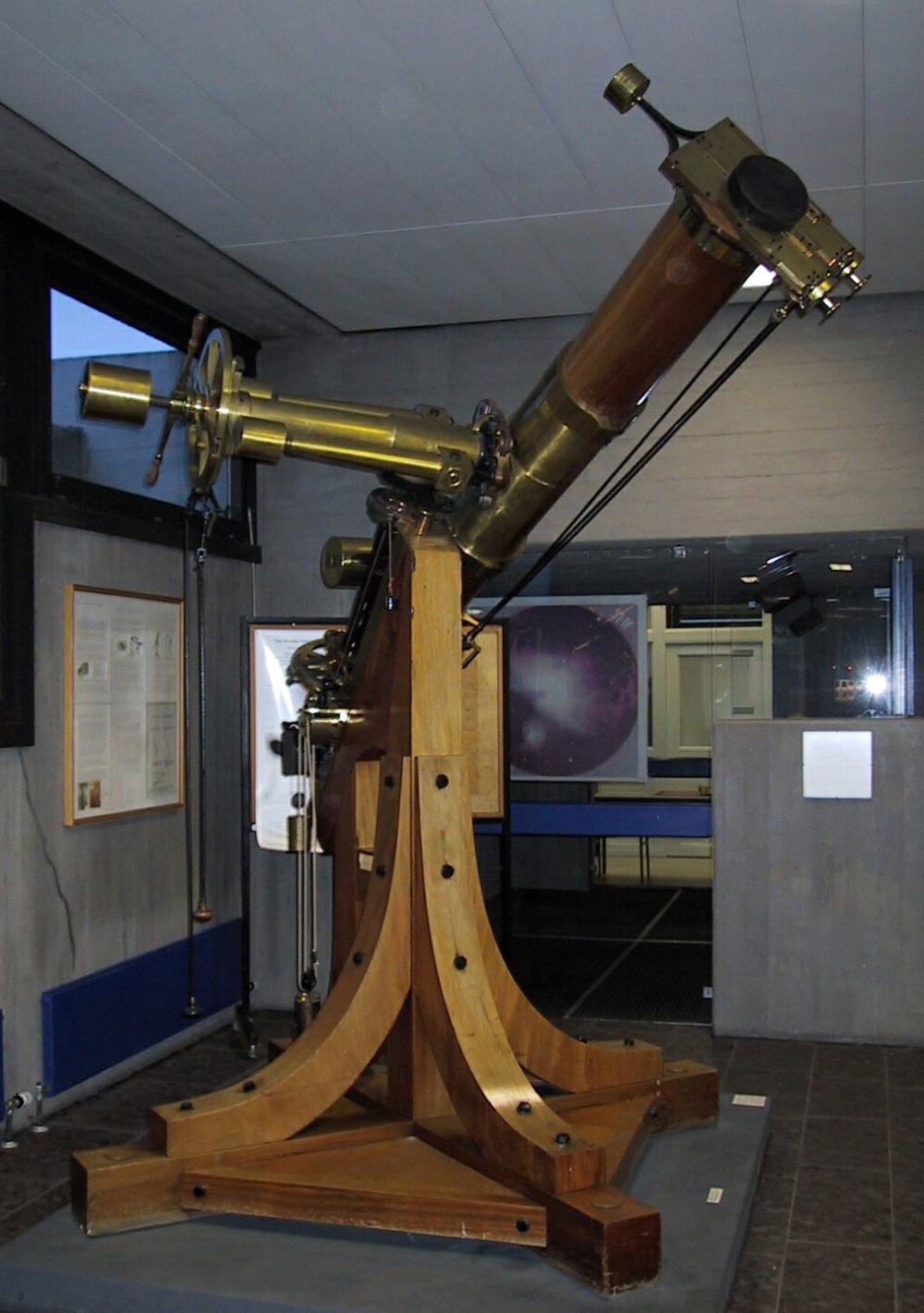
Fig. 5b. Heliometer of Bonn Observatory, (Fraunhofer), Merz & Mahler of Munich (1842)
Argelander discovered candidates for nearby stars whose distances (parallaxes) were then measured by his employees, e.g. August Winnecke (1835--1897), using the Bonn heliometer - in the time when Friedrich Wilhelm Bessel (1784--1846) and Friedrich Georg Wilhelm von Struve (1793--1864) measured the first parallaxes (Argelander measured 4 out of 10 parallaxes, known at that time).
He systematically recorded the data of all known variable stars and developed with his "Stufenschätzmethode" (step estimation method) a simple method for measuring stellar brightness (visual photometry).
Argelander was an influential chairman of the "Astronomische Gesellschaft" (Astronomical Society) and he was elected in 1850 and 1864 as rector of the University of Bonn.
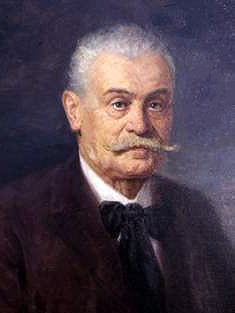
Fig. 6a. Karl Friedrich Küstner (1856--1936) (Wikipedia)
Karl Friedrich Küstner (1856--1936), who acquired the large refractor in 1899, started with astrophysics, especially spectroscopy and photography. He took photos of spectra in order to determine radial velocities.
After WWII Friedrich Becker (1900--1985) with the help of his assistant Hans Schmidt (1920--2003) rebuilt Bonn’s astronomy. In 1950--1954 a first outstation, the Observatory Hoher List (60km SSW from Daun, Eifel), enlarged in 1962--1965, was founded.
In addition the establishment of the Radio Observatory Stockert enabled the Bonn astronomers access to observations in new wavelengths.
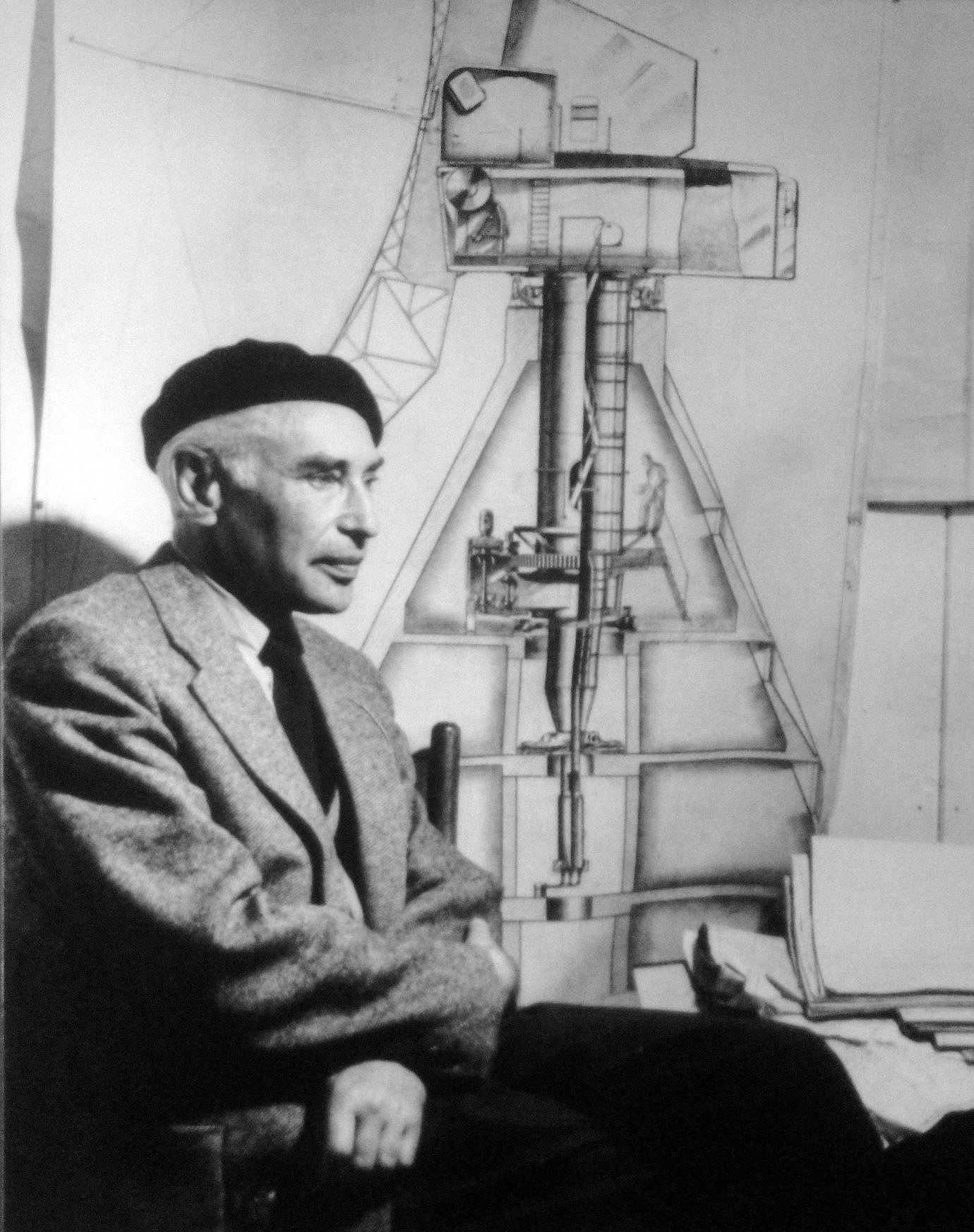
Fig. 6. Friedrich Becker (1900--1985) (Photo: Gudrun Wolfschmidt)
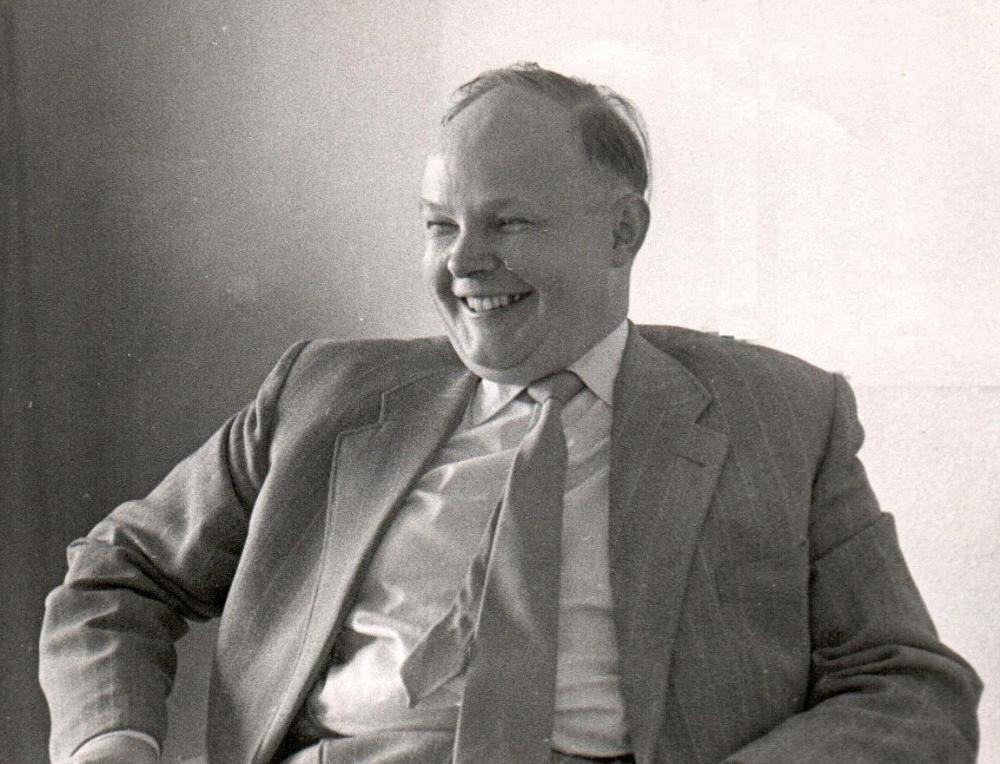
Fig. 6. Hans Schmidt (1920--2003) 1958, (© Christoph Schmidt)
Directors of Bonn Observatory
- 1819 to 1836 -- Karl Dietrich von Münchow (1778--1836)
- 1836 to 1875 -- Friedrich Wilhelm August Argelander (1799--1875)
- 1875 to 1891 -- Eduard Schönfeld (1828--1891)
- 1891 to 1924 -- Karl Friedrich Küstner (1856--1936)
- 1925/27 to 1946 -- Arnold Kohlschütter (1883--1969)
- 1947 to 1966 -- Friedrich Becker (1900--1985)
- 1966 to 1985 -- Hans Schmidt (1920--2003)
- 1986 to 2007 -- Klaas Sjoerds de Boer (*1941).
History
Historical Instruments of Bonn Observatory
Argelander planned the instrumentation (11 astronomical instruments, clocks and meteorological instruments) and applied for support at the Prussian cultural minister Karl Baron vom Stein (1757--1831).
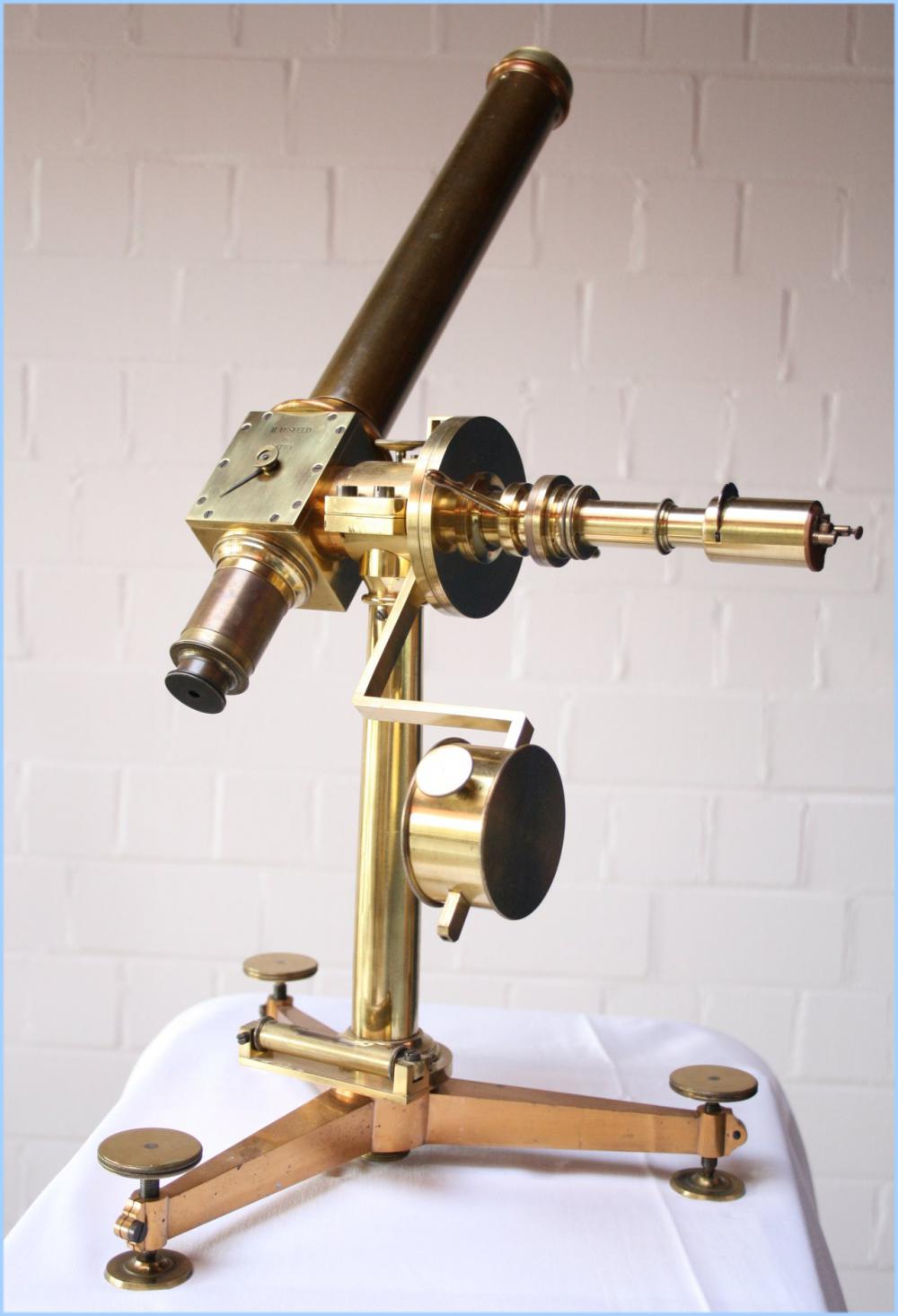
Fig. 7a. Zöllner Photometer (Photo: Michael Geffert)
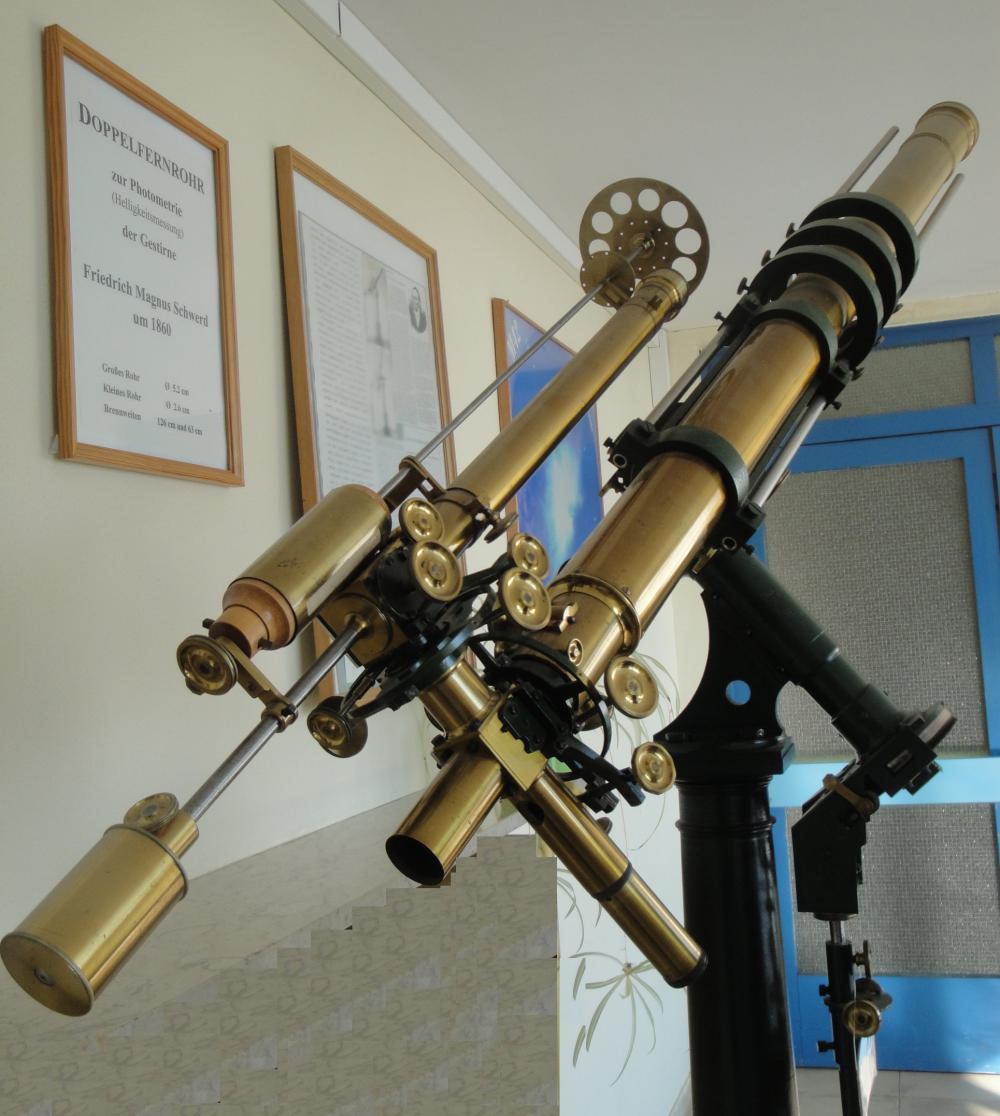
Fig. 7b. Schwerd Photometer (Photo: Gudrun Wolfschmidt)
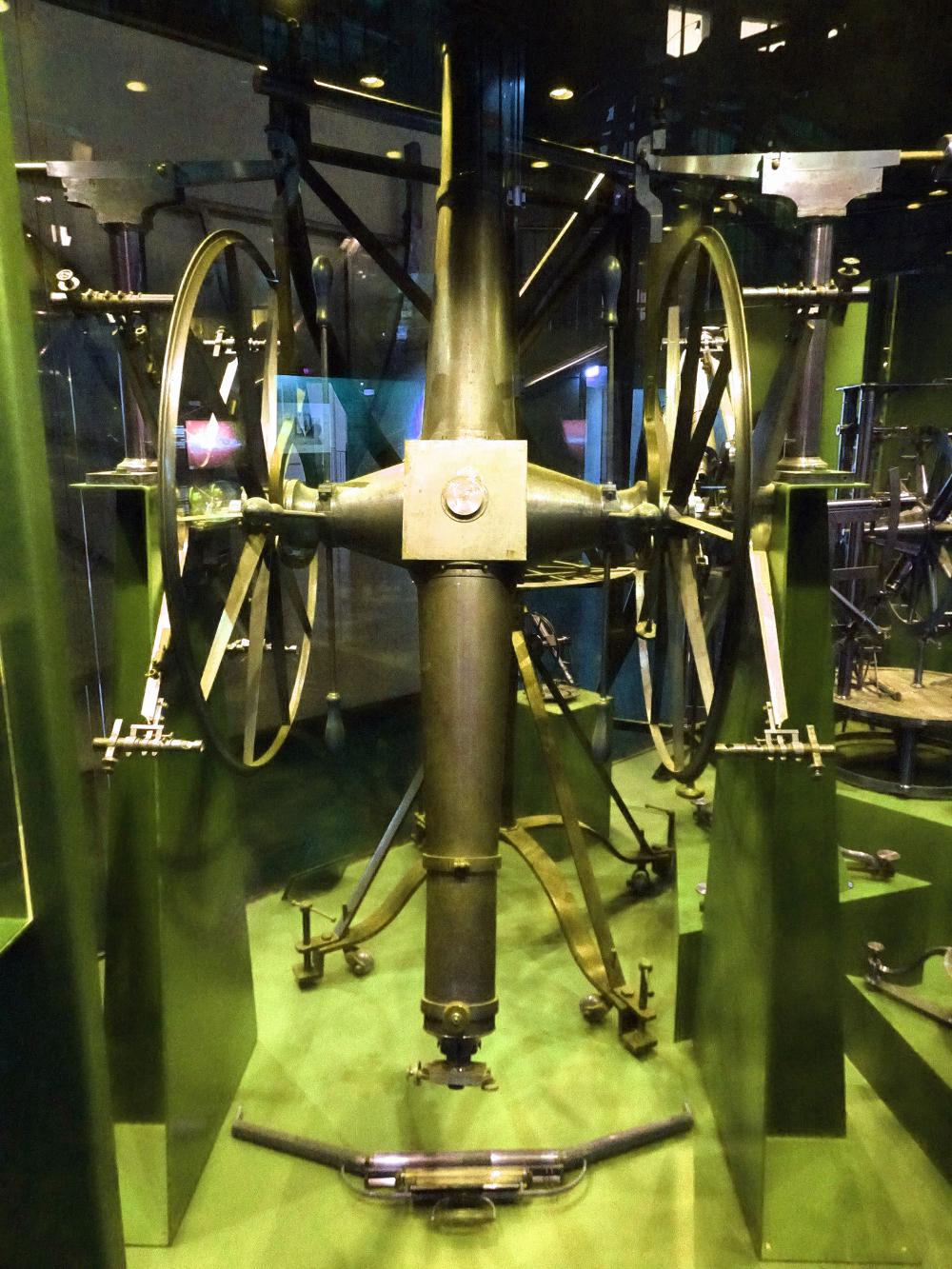
Fig. 7c. Meridian Circle, Carl P.H. Pistor & Carl O.A. Martins, Berlin (1845), (Photo: Gudrun Wolfschmidt)
- 7.7-cm-Comet seeker (focal length 65cm), Merz & Mahler, Munich, used by Argelander for the Bonner Durchmusterung (1863).
- Heliometer, (Fraunhofer), Merz & Mahler, Munich, 1842
- Meridian circle, Carl P. H. Pistor (1778--1847) & Carl O. A. Martins (1816--1871), Berlin, around 1845
- Schwerd Photometer
- Zöllner Photometer
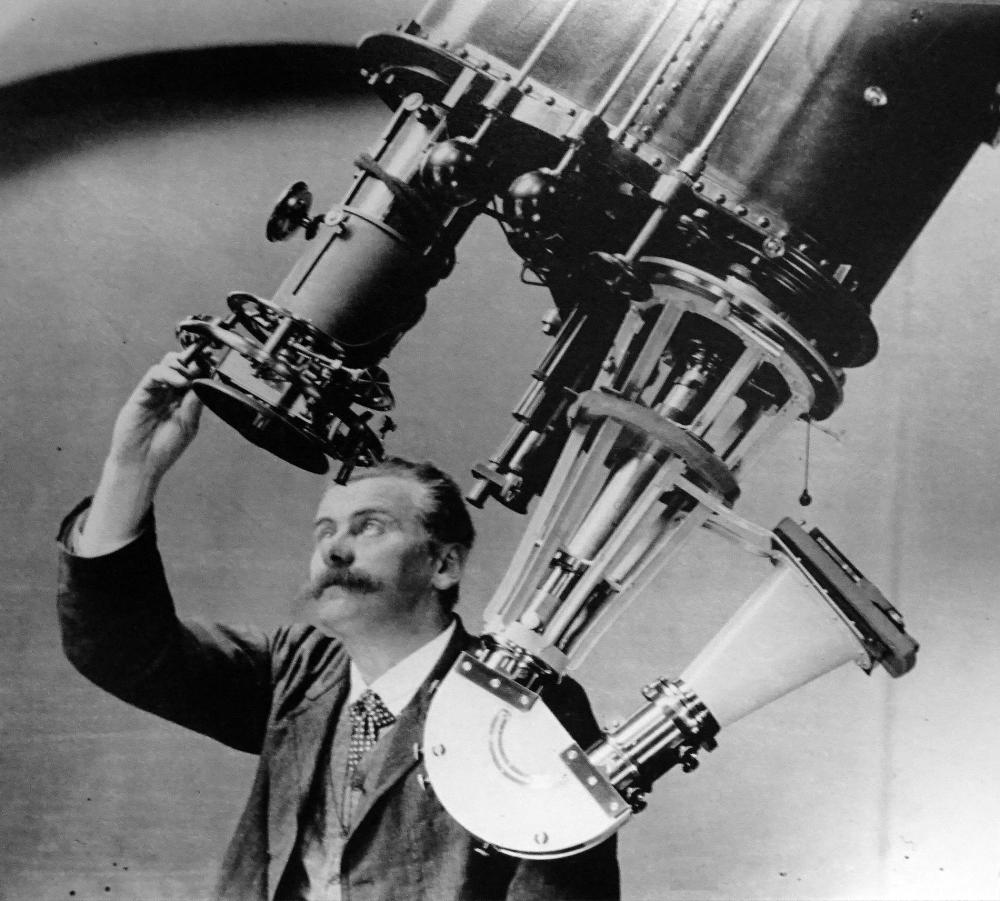
Fig. 7d. Karl Friedrich Küstner observes with the 3-Prism-Spectrograph, Toepfer of Potsdam (Photo: Gudrun Wolfschmidt)
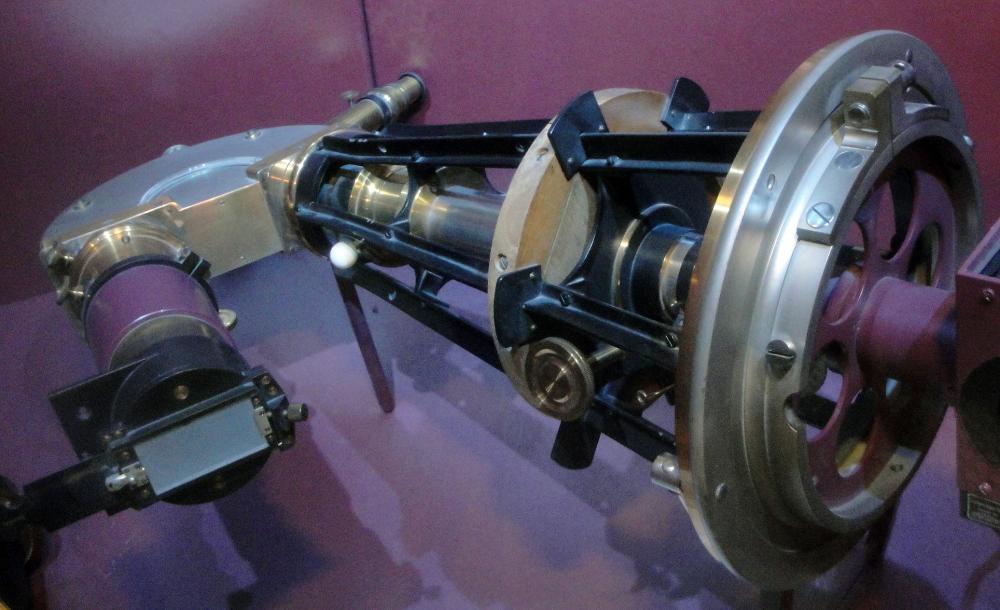
Fig. 7e. Three-Prism-Spectrograph, Toepfer of Potsdam (Photo: Gudrun Wolfschmidt)
- Three-Prism-Spectrograph, Toepfer of Potsdam
- Large double Refractor (30/36cm, focal length 5.13m), 2 Objectives (vis. 36cm, photogr. 30cm), C.A. Steinheil of Munich, mounting: Repsold of Hamburg (1899), in an extra dome building
(in addition AG zone camera) - Small 30-cm-Refractor -- Astrograph (Triplet, 150cm focal length), Carl Zeiss, Jena, 1925 (former expedition instrument in Bolivia expedition in La Paz, 1926--1929, Potsdam Spectral Survey, "Potsdamer Spektral-Durchmusterung" in the Selected
Areas Nr. 116-206), observations in Bonn since 1931.
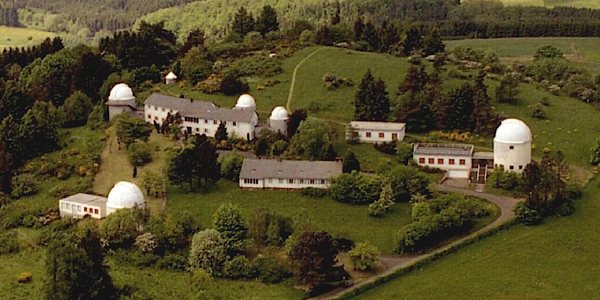
Fig. 8a. Hoher List Observatory (OHL)
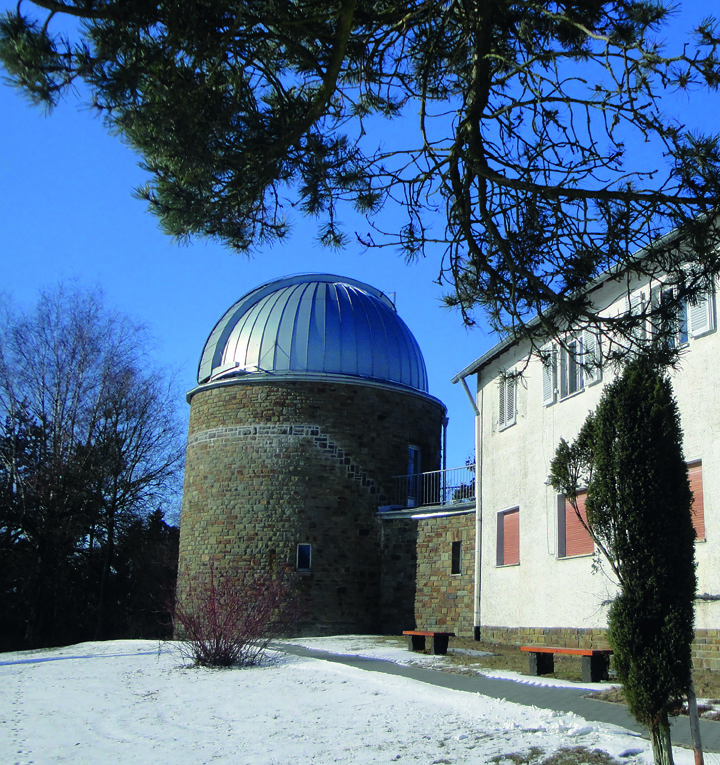
Fig. 8b. OHL Tower 1 with the Schmidt Telescope (Photo: Gudrun Wolfschmidt)
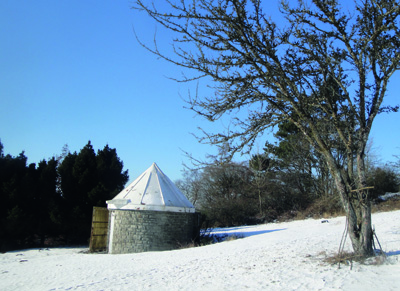
Fig. 8c. OHL Tower 4 with the Schroeder-Refractor (Photo: Gudrun Wolfschmidt)
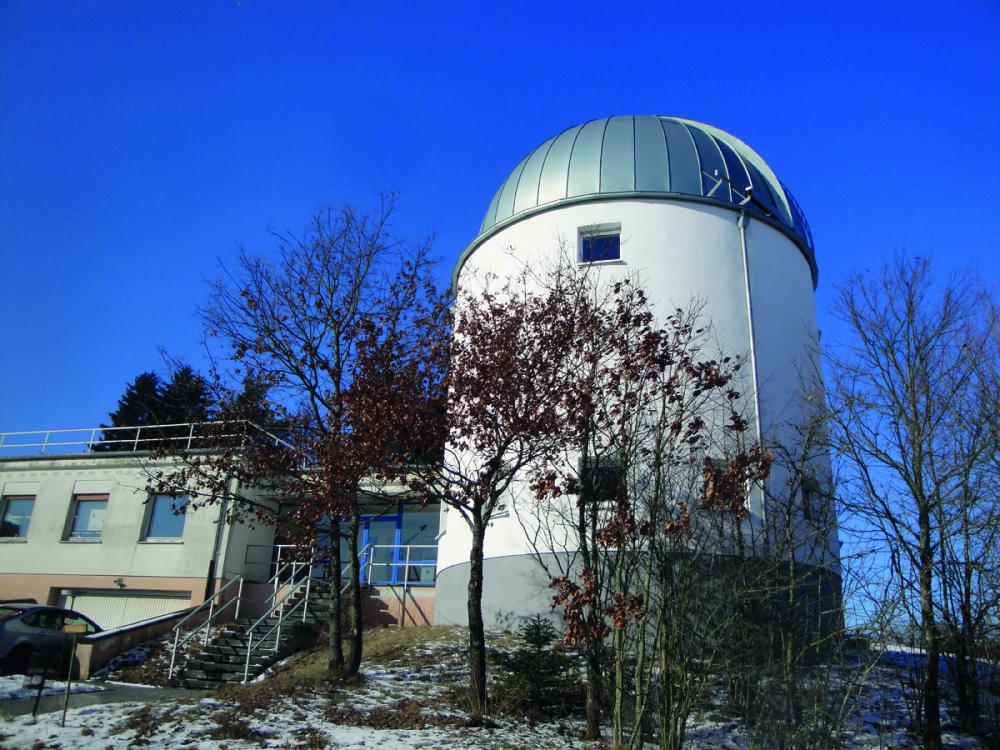
Fig. 8d. OHL Tower 5 with the Double Refracting Telescope and the workshop (Photo: Gudrun Wolfschmidt)
Modern Instruments since the 1950s -- Hoher List Observatory
- 36-cm-Cassegrain Reflecting Telescope (focal length 7m), Friedrich Ohlmüller of Berlin (1952),
combined with a guiding telescope "Leitfernrohr" (20cm, 2,45m), Merz, Munich, 1929, and
Photoelectric Photometer, Workshop of Bonn Observatory (1953), (Hoher List, Tower 3, 1953) -- today in the Deutsches Museum in Munich - 34/50cm Schmidt Telescope, Askania of Berlin (1954), (Hoher List, Tower 1, 1953/54)
- Astrograph (Triplet, small 30-cm-Refractor, 150cm focal length), Carl Zeiss of Jena (1925), (Hoher List, Tower 2, 1954)
- Small 15.9-cm-Schröder-Refractor (focal length 193cm), Hugo Schröder, Hamburg, 1874,
10.8-cm-Camera (focal length 65cm), Steinheil, Munich, 1899, and
a short focal length 20/14-cm-Schmidt Camera (focal length 25cm, f/1.8),
F. Ohlmüller, Berlin, 1953 (Hoher List, Tower 4, 1954) - Iris diaphragm Photometer, Sartoriums-Werke AG & Co., Göttingen, 1954
- Iris diaphragm Photometer, Wilhelm Becker, Basel, 1959 (vgl. Askania, Berlin)
- "Koordinatenmeßapparat" KOMESS (Coordinate measuring apparatus), Carl Zeiss, Jena, 1958 - Large Double Refractor (30/36cm), optics: C.A.Steinheil, Munich, mounting: Repsold, Hamburg (1899), renewed by Askania, Berlin, 1961 (Hoher List, Tower 5, 1961)
- 1.06-m-Nasmyth-Cassegrain Reflecting Telescope (focal length 15m), Askania of Berlin (1965), gable mounting,
designed by Ing. B.G. Hooghoudt, Leiden, built by Rademakers, Rotterdam (Hoher List, Tower 6, 1965) - IR-Photometer, 1968/69
- Grating spectrograph
- Area Scanner
- Hiltner Camera
- Image converter ("Bildwandler")
- Image amplifier ("Bildverstärker")
- Focal reductor
- Grating prisms (Gitterprismen)
- Double grating prisms
- Fabry-Perot-Etalon
- OMA-SIT-Vidicon
- Fast Photometer, Carl Zeiss, Jena, 1967
- Abbe Spectral Comparator, Carl Zeiss, Jena, 1967
- 60-cm-Ritchey-Chretien (focal length 180cm), H.W. Kaufmann (Hoher List, Tower 3, 1984)
- 3 channel Photometer.
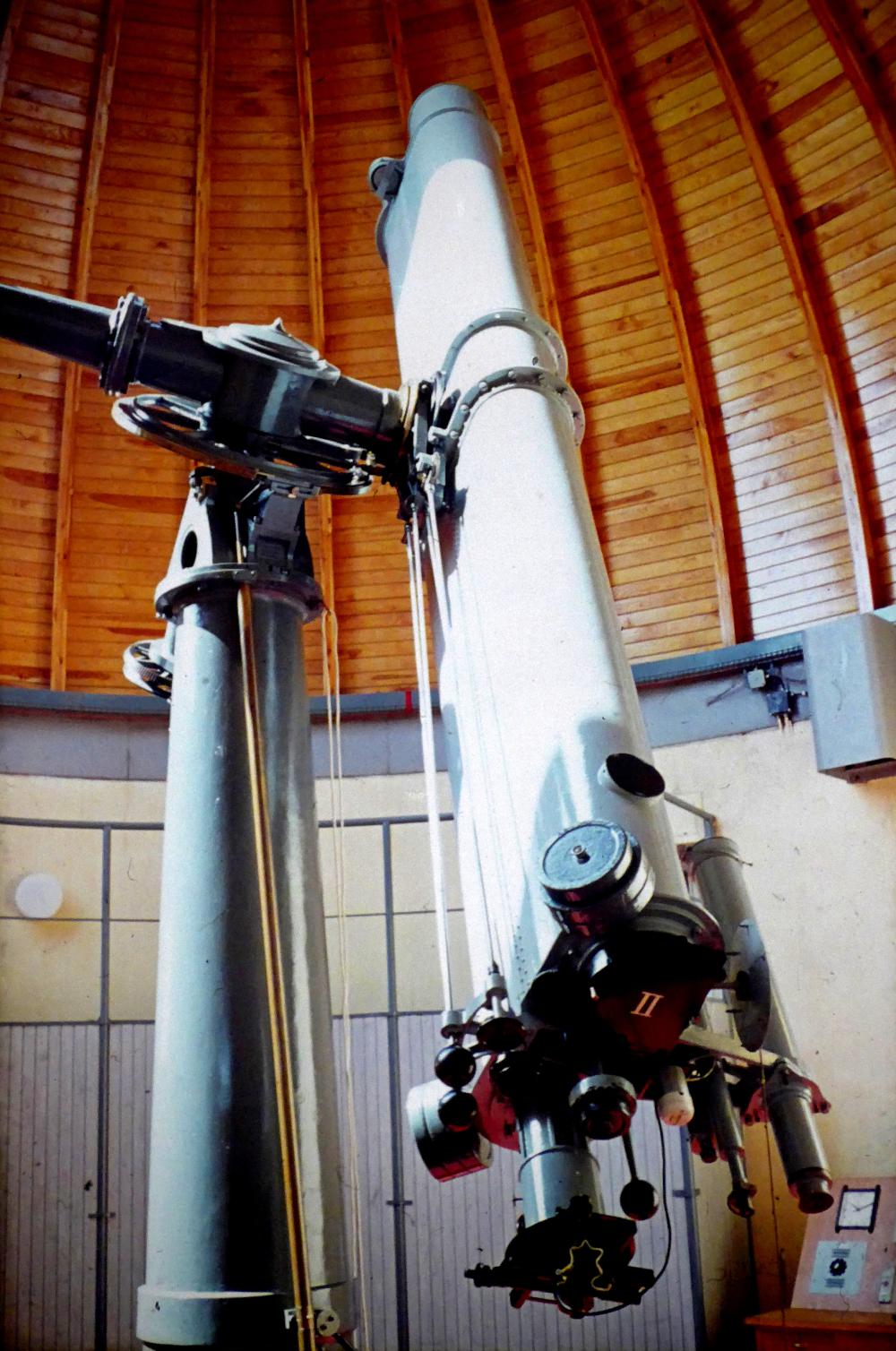
Fig. 8e. Double Refractor (30/36cm), Steinheil of Munich, Repsold of Hamburg (1899), (Hoher List, Tower 5, 1961), (Photo: Christoph Schmidt)
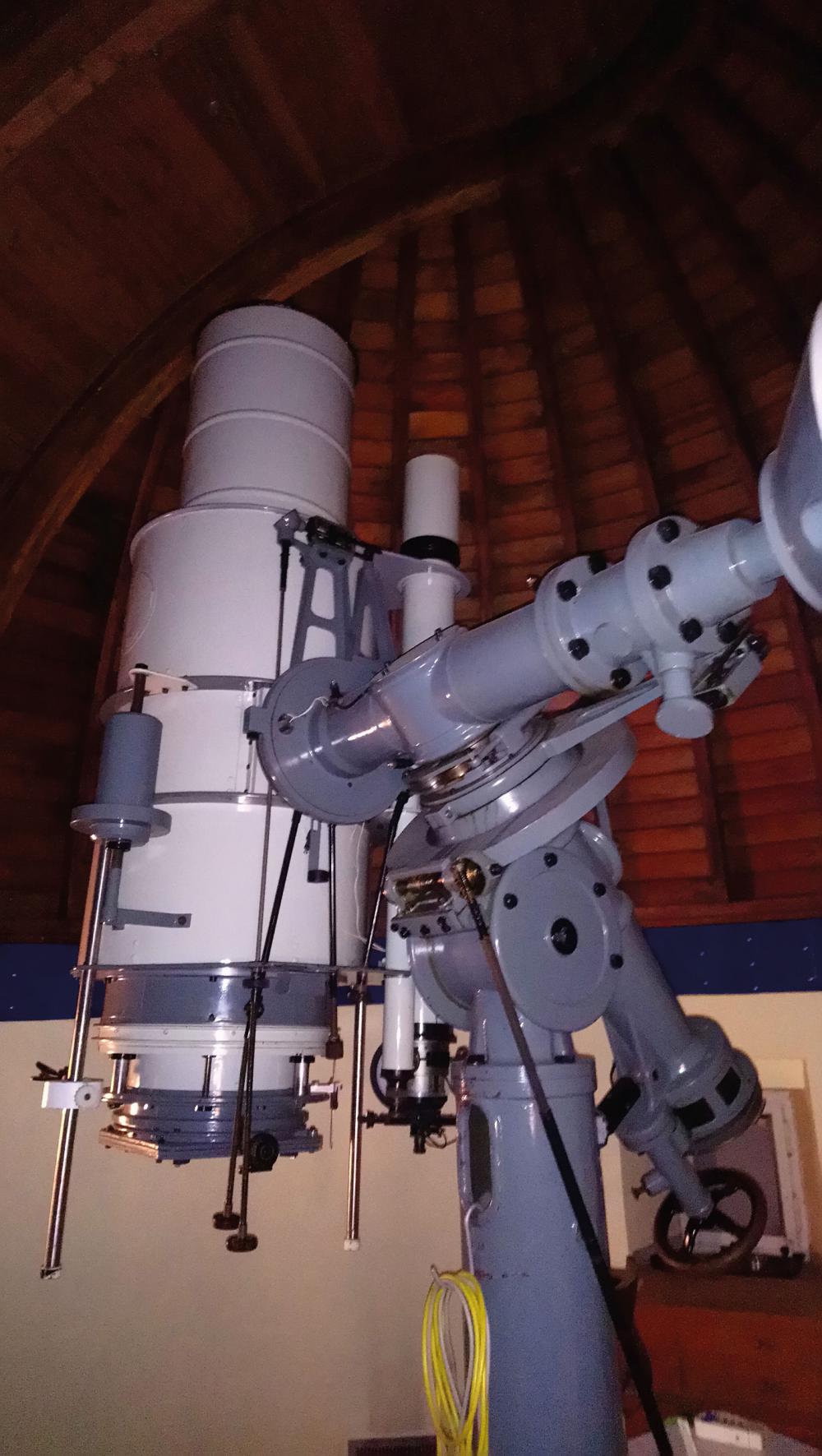
Fig. 8f. 30-cm-Astrograph (Triplet), Carl Zeiss of Jena (1925), (Hoher List, Tower 2, 1954), (Photo: Bruno Nelles)
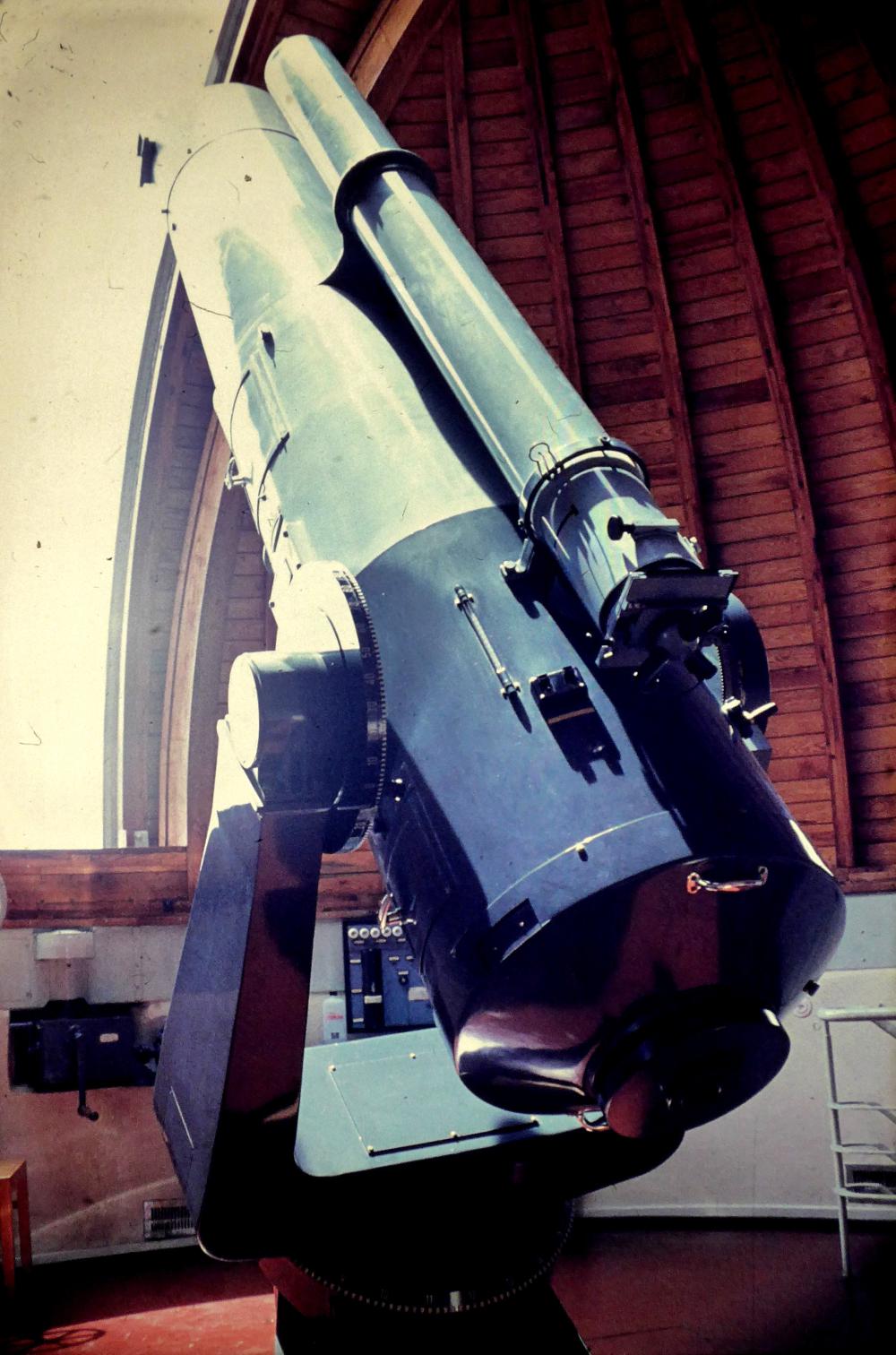
Fig. 8g. 34/50-cm-Schmidt Telescope, Askania of Berlin (1954), (Hoher List, Tower 1, 1953/54), (Photo: Christoph Schmidt)
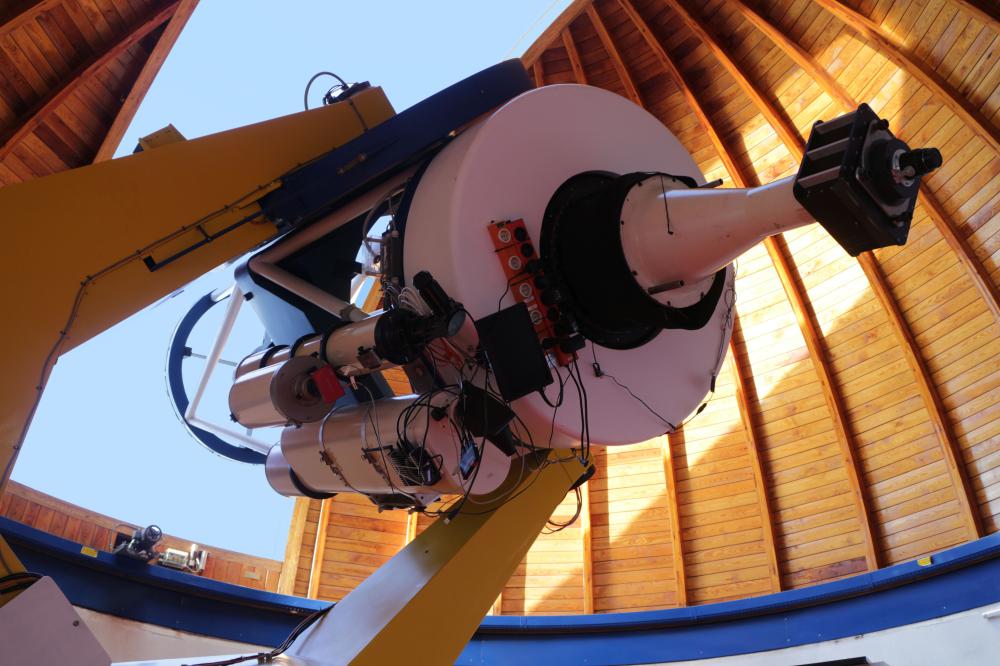
Fig. 8h. 1-m-Nasmyth-Cassegrain Reflecting Telescope, Askania of Berlin (1965), gable mounting by Rademakers of Rotterdam (Hoher List, Tower 6, 1965) (© AVV)
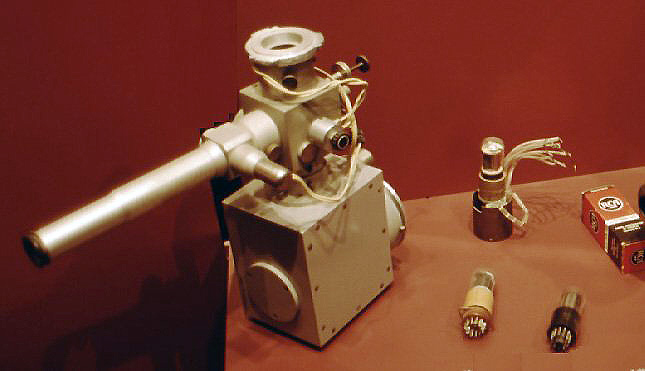
Fig. 8i. Photoelectric Photometer (1953), 36-cm-Cassegrain Reflecting Telescope, Friedrich Ohlmüller of Berlin (1952), (Hoher List, Tower 3, 1953) (Photo: Gudrun Wolfschmidt)
Directors of Hoher List Observatory
- 1951--1966 -- Prof. Dr. Hans Schmidt
- 1966--1995 -- Prof. Dr. Edward H. Geyer
- 1995--2002 -- Prof. Dr. Wilhelm Seggewiß
- 2002--2012 -- Dr. Klaus Reif.
State of preservation
The Old Observatory as well as the refractor building are under monument protection and listed as a monument in North Rhine-Westphalia (NRW). The observatory building needs restoration.
The historic instruments were transferred in 1973 to the new building, Argelander Institute for Astronomy; here some are presented in the open entrance hall. In 2013 they were transferred to the Bonn University Museum. Some instruments, e.g. the meridian circle, were given to the Deutsches Musem in Munich, when I compiled the astronomy exhibition there in 1992, existing until 2022.
Comparison with related/similar sites
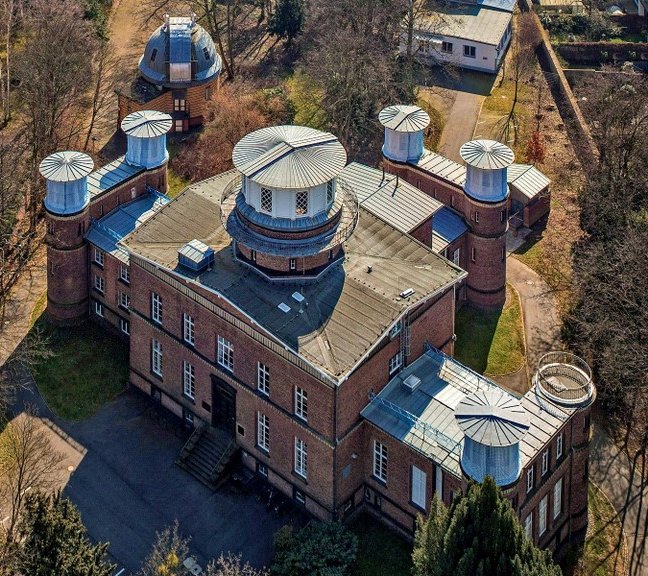
Fig. 9. Bonn Observatory, aerial view with 7 domes and in the background the dome of the refractor, so-called "Refraktorium" (1899)
The architecture of observatories around 1800 is characterized by observatories in the shape of a Greek cross with a central dome. Examples are among others the observatories in Madrid (1790 to 1846), Turku (1819), Berlin, New Observatory (1835) and in Bonn (1844), Athens (1846), Quito, Ecuador (1873), Vienna University Observatory (1883).
In the dome was the main instrument, this was a refractor; in the east and west wing was the meridian circle or the transit instrument. Also the library, the living quarters and offices for the astronomers were integrated. Especially the Observatorio Astronomico, Quito, Ecuador, erected in 1873, was built exactly after the model of Bonn Observatory with six small cylindrical domes in addition to the central dome.
Threats or potential threats
The building is not in good condition.
Present use
Since 1975 the old Bonn Observatory is used by the Institut für Kommunikationswissenschaften of Bonn University, since 2010 Institut für Sprach-, Medien- und Musikwissenschaft.
Fig. 10. Bonn Public Observatory (Volkssternwarte), dome for the large refractor (1899), (Wikipedia, Stefan Knauf)
The nearby dome building, "Refraktorium" (1899), is used as public observatory Bonn since 1972 (Astronomische Vereinigung e.V. Bonn); besides the refractor there in an exhibition, a library and a lecture hall. The so-called "Argelander Tower", the eastern tower on the south wing of the Old Observatory in Bonn, is dedicated to Friedrich Wilhelm August Argelander (1799--1875), the outstanding astronomer and founder of the Bonn Observatory.
Astronomical relevance today
In 1952 some of the telescopes were relocated to the new Observatory "Hoher List" in the Eifel. In 1973, the Observatory, together with the other astronomical institutes of the University moved to Endenich, today they form together the Argelander Institute for Astronomy.
The "Argelander Institute for Astronomy" was created in 2006 by the merger of the three astronomical university institutes: the Observatory, the Radioastronomical Institute (RAIUB) and the Institute of Astrophysics and Extraterrestrial Research.
References
Bibliography (books and published articles)
- Argelander, Friedrich Wilhelm August: Aufforderung an die Freunde der Astronomie zur Beobachtung der veränderlichen Sterne. Bonn 1844.
- Becker, Friedrich, Friedrich Wilhelm August Argelander 1799-1875. In: Bonner Gelehrte. Beiträge zur Geschichte der Wissenschaften in Bonn, Band 7: Mathematik und Naturwissenschaften, Bonn 1970, S. 73-78.
- Denk, Andreas & Ingeborg Flagge: Architekturführer Bonn. Berlin: Dietrich Reimer 1997, p. 24.
- Geffert, Michael: ├ûffentlichkeitsarbeit und Exponate aus der Geschichte der Astronomie. In: Wolfschmidt, Gudrun (ed.): Popularisierung der Astronomie -- Popularization of Astronomy. Proceedings der Tagung des Arbeitskreises Astronomiegeschichte in Bochum, 16.--18. September 2016. Hamburg: tredition (Nuncius Hamburgensis -- Beiträge zur Geschichte der Naturwissenschaften; Vol. 41) 2017, p. 462-473.
- Knopp, Gisbert & Wilfried Hansemann: Rheinische Kunststätten-Universitätsbauten in Bonn. Köln: Rheinischer Verein für Denkmalpflege und Landschaftsschutz 1987.
- Müller, Peter: Sternwarten. Architektur und Geschichte der astronomischen Observatorien. Dissertation Universität Köln 1974.
Bern, Frankfurt am Main: Peter Lang Verlag (Europäische Hochschulschriften. R. 32, 1) 1975, 2nd edition 1978. - Müller, Peter: Sternwarten in Bildern. Architektur und Geschichte der Sternwarten von den Anfängen bis ca. 1950. Berlin, Heidelberg: Springer 1992.
- Schmidt, Hans: Astronomen der Rheinischen Friedrich-Wilhelms Universität Bonn. Bonn: Bouvier Verlag 1990.
- Sticker, Bernhard, Friedrich Wilhelm Argelander und die Astronomie vor hundert Jahren. Bonn 1944.
- Wolfschmidt, Gudrun: Argelander and the Early Development of Astronomical Photometry. In: Klare, G. (ed.): Astronomische Gesellschaft Abstract Series No. 11 (1995), S. 112.
- Wolfschmidt, Gudrun: Die Entwicklung der astronomischen Photometrie bis in die 20er Jahre. [The Development of Astronomical Photometry] In: Wissenschaftliches Jahrbuch des Deutschen Museums, München: R. Oldenbourg (Abhandlungen und Berichte N.F. 6) 1989, S. 227-268, S. 271-272.
- Wolfschmidt, Gudrun (ed.): 70 Jahre Observatorium Hoher List. Sieben Jahrzehnte astronomische Beobachtung in der Eifel. [70 Years Observatory Hoher List -- Seven Decades of Astronomical Observations in the Eifel]. Hamburg: tredition (Nuncius Hamburgensis -- Beiträge zur Geschichte der Naturwissenschaften; Band 37) 2020.
- Zinner, Ernst: Argelander, Friedrich Wilhelm August. In: Neue Deutsche Biographie 1 (1953), S. 350.
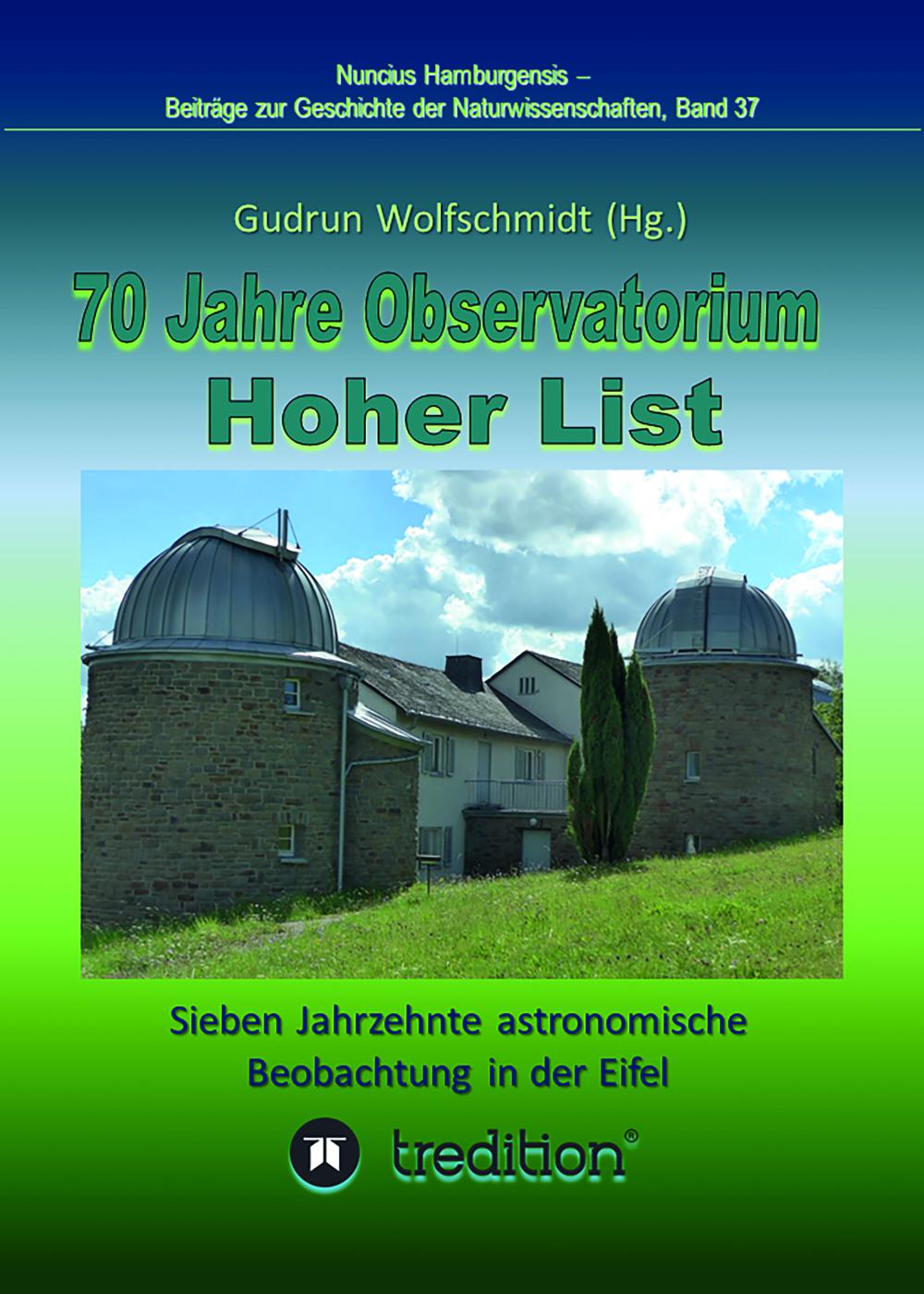
Fig. 11. Cover of the book edited by Gudrun Wolfschmidt: 70 Years Observatory Hoher List -- Seven Decades of Astronomical Observations in the Eifel, 2020 (© Gudrun Wolfschmidt)
Links to external sites
- Friedrich Wilhelm August Argelander (1799--1875)
- Argelander Institute for Astronomy, Argelander-Institut für Astronomie (AIfA), Bonn University -- Research
- Max Planck Institut für Radioastronomie
- Hoher List Observatory, near Schalkenmehren, Daun (Wikipedia)
- Internationaler Sternenpark Nationalpark Eifel -- Eifel National Park, Dark Sky Park (*2004)
- Public observatory Bonn (Volkssternwarte Bonn) -- Argelanderturm -- Refraktorium (1899)
- Astronomische Vereinigung Vulkaneifel (AVV) am Hohen List e.V. (English) -- des Observatoriums Hoher List -- Instruments
Links to external on-line pictures
- Heliometer Bonn (YouTube) "Wunderschön präzise messen" (unibonntv, 2015).
No multimedia content published
Currently there is no multimedia content published for this case study






